Cancer Diaries
Part Two: The Medical
Conspiracy
|
Written by
Rick Archer
July 2013
Do you believe in Conspiracies?
Do Conspiracies really exist?
There are a lot of JFK, Area
51, Roswell, Alien Abductee, UFO and 9-11 people who
would argue in the affirmative.
Who can forget
“The Truth is Out There”,
the famous refrain of the
late great X-Files
series?
The show suggested a massive
conspiracy inside our government.
X-Files
was successful because there are many Americans who
have a latent suspicion of power in general.
That distrust includes our government, our spy
agencies, big business, the media and the military.
As it
turns out, there are those who suspect a conspiracy
in the Medical World as well.
|
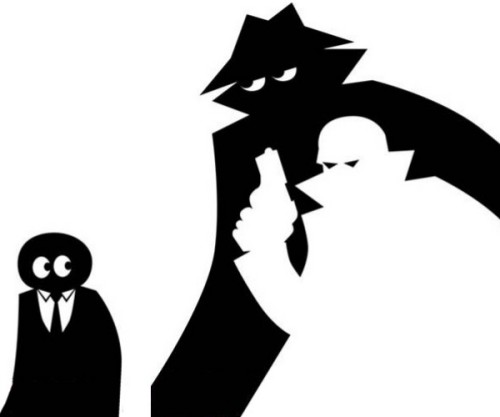 |
Laetrile
The Medical
Establishment has all sorts of letters. AMA stands for
American Medical Association. ACS stands for American
Cancer Society. NIH stands for National Institute of
Health. NCI stands for National Cancer Institute.
FDA stands for Food and Drug Administration. Big Pharma is the nickname for the Pharmaceutical industry which
is said to be the most profitable industry in the country.
The Medical Conspiracy Theorists typically lump the whole
bunch of them together.
There are those
who contend certain nameless, faceless men inside the
Medical Establishment have teamed up over the years to
eliminate certain alternative cures for cancer.
Laetrile is as good a place to start as any.
I remember when
I was back in college, I read about a huge fight over a
natural cancer remedy named Laetrile. I was impressed
by a magazine article that praised the treatment and
suggested Laetrile was a major breakthrough. This was about
1970.
Laetrile is a
chemically modified form of amygdalin, a naturally-occurring
substance found mainly in the kernels of apricots, peaches,
and almonds. A lot of people were furious that the
medical establishment was making it very difficult for
medical professionals to experiment. Certain doctors wanted to
treat their willing patients with the Laetrile drug, but to
do so invited an FDA crackdown.
I was far too
busy trying to get a college degree to pay much attention to
the controversy, but I do remember wondering why the AMA or
the FDA was going to so much trouble to prosecute people at
a time when there was no existing cure for cancer to begin
with. What if something natural and inexpensive drawn
from an apricot of all things could be proven effective?
There were many people claiming the stuff worked, so it
seemed reasonable to expect a reputable laboratory would at
least conduct some clinical trials.
Such were the
thoughts of a naive young man. That was 40 years ago.
I am older now and a lot more pessimistic. I no longer
expect people to automatically do the right thing.
When I decided to write this chapter on "Conspiracy", the
first thing I did was to check back on Laetrile.
Surely the controversy would have died down in 40 years.
I was amazed to find there is still a hornet's nest of
bitterness on both side of the issue.
Does Laetrile
have any value? Well, if you believe Ralph Moss, yes
it does. Moss served as a science writer at Memorial
Sloan-Kettering Cancer Center in the 1970s. In his book
The Cancer Industry, Moss told an interesting story.
As part of his
job at Memorial Sloan-Kettering, a prestigious cancer
research and treatment facility in New York, Moss was able
to keep tabs on the various research being conducted. Moss says he
quit when that institution deliberately misled the press and
public about test results for a promising treatment. That
treatment was the much-maligned Laetrile (vitamin B-17).
It
was finally banned by the FDA and its proponents were forced
underground.
Moss reports that Sloan-Kettering's most
respected researcher, Kanematsu Sugiura, stood by the
efficacy of laetrile until his death.
If that story is
true, then post it as Exhibit One in my Conspiracy article.
Who
Can I Trust?
There is only
one problem. How do I know
if any of this is true? The first thing anyone older
than six learns is that the Internet is full of inaccuracy
and deliberate lies. I learned my lesson the hard way.
Back in 2007 I wrote
a simple story about an obscure village in China known as "Guoliangcun".
It was an interesting place because its villagers had carved
a tunnel into the mountain with little more than rudimentary
tools.
I think my
article was probably the first story in English about the
village. My story instantly reached the top spot on
Google for "Guoliang" and remained there for years. In fact, even today
my article is still on
Google's Page One.
Only one problem
- I got "Hunan" and "Henan" province mixed up and put the
village in the wrong spot by 200 miles. To understand
the significance, at the time there were no readily
accessible detailed road maps in English on the Internet
like there are today. Since I couldn't translate
Chinese, no Western reader could find the place without a
serious effort.
Then one day someone
who lived in Korea emailed to point out my
mistake. I thought he was nuts. Now a very odd thing
happened. I googled a bunch of different sites to see
where they put the place and
every single one of them agreed with me.
Ha! What was this
Korean guy talking about? Heck, every site I visited said the
same thing as me!! Then it dawned on me... these sites
were using my exact words.
Oh no.
Every site agreed with me because every one of these sites
had copied my work! Not one of these people had done a
lick of independent research on their own. It was all
cut and paste.
Thanks to me,
dozens of different web sites had the wrong location and it was all
my fault! I had dozens of people quoting me verbatim as if I
was a world authority. This was ridiculous. I have never even been there. Good
grief.
I cannot even begin to
explain the nagging guilt I felt. I had written about the
place as a way to interest tourism only to discover
I was responsible for losing Guoliang to countless Internet users
and tourists FOR TWO AND A HALF YEARS!
(Search for
Guoliang)
|
 |
That
embarrassing incident is what helped me develop a healthy
skepticism for anything I read on the Internet. It was
very clear to me how easy it was to either accidentally or
deliberately create an inaccuracy... then step back and
watch it multiply.
So what about
this Ralph Moss guy? Was he a good guy or was he a
malcontent? How much credibility does "Ralph Moss"
have?
Good question.
So I decided to Google "Ralph Moss".
|
Wikipedia
immediately popped up. No surprise there. Wikipedia
figures prominently in practically any Internet research
these days. For any subject I checked, Wikipedia
generally occupied the first, second, or third listing.
I decided to go
click into Wikipedia, the current font of all knowledge.
Let's see what our friend Wikipedia had to say about
Laetrile.
"Studies
have found Laetrile compounds to be clinically
ineffective in the treatment of cancer, as well as
dangerously toxic. They are potentially lethal when
taken by mouth, because certain enzymes (in particular,
glucosidases that occur in the gut and in various kinds
of seeds, edible or inedible) act on them to produce
cyanide.
The
promotion of laetrile to treat cancer has been described
in the medical literature as a canonical example of
quackery, and as "the slickest, most sophisticated, and
certainly the most remunerative cancer quack promotion
in medical history."
And what about
Ralph Moss? Wikipedia said:
"Moss served
as a science writer at Memorial Sloan-Kettering Cancer
Center in the 1970s. He was fired in 1977 by
Sloan-Kettering after publicly accusing the institution
of suppressing information on laetrile, a
now-discredited alternative cancer treatment
Well, so much
for Laetrile and that Moss guy. Laetrile is obviously
something only a quack would ever use. Wikipedia made
that perfectly clear.
However, to my surprise, the more I poked around, the more I
began to sense that Wikipedia didn't have a nice word to say
about anyone I was curious about. It seemed to me that Wikipedia
had a disturbing and extremely predictable slant against
Alternative Medicine.
|
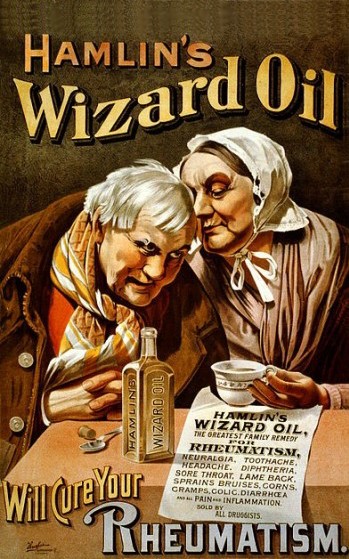 |
Wikipedia wasn't the only place where there was
contradiction. When it comes to
cancer, there is a tremendous amount of uncertainty.
It is nearly impossible to decide who is telling the truth
due to one highly disconcerting reality - no matter what the
cure, most people still continue to die of cancer. It
doesn't matter whether the treatment is mainstream or
alternative, chemotherapy or apricot seeds...
people still die.
As long as
people keep dying, it is tough to believe anyone who claims their method
works. That opens the door for much arguing, suspicion
and contradiction. If you believe in your cure, you point to the
people still standing. If you don't believe, you point
to the people who died.
Furthermore, the stakes are incredible. Since there is
such a ridiculous amount of money involved in winning or
losing, the search for a cure to cancer is the most bitter,
contentious playing field I have ever witnessed.
In fact, the
stakes are so high that people might be tempted to cheat to
win. It has been suggested a cabal of powerful men
have systematically erased several promising cancer cures
over the past century in a desperate and highly ruthless
attempt to pave the way for their own treatment methods.
And with that, we begin our story.
Rick Archer
July 2013
|
|
Cancer - The Forbidden Cures
In June 2012, Mr. Skeptical challenged
me to watch a 2010 documentary titled
Cancer - The Forbidden Cures. This 73 minute
documentary was created created by Massimo Mazzucco.
You may remember Mr. Skeptical from Chapter One. It
was his derision of my ignorance about cancer that started
my research project in the first place.
Mr. Skeptical pointed out I didn't
even have to pay for the video... it sits there on the
Internet for anyone to see. Here is the Introduction.
This Documentary claims cancer is
the only disease that has been defeated dozens of times
without anyone knowing it. It says there have been
successful cures against cancer discovered in the last
100 years and lists the reasons why they were
suppressed.
In the last 100 years, dozens of
doctors, scientists, and researchers have developed
diverse and effective solutions against cancer only to
be thwarted by the political and propaganda power of the
drug-dominated medical profession.
This is the story of Essiac,
Hoxsey, Laetrile, Gerson, Shark Cartilage, Mistletoe,
and Bicarbonate of Soda all put together in a stunning
overview that leaves no doubt that inexpensive cures for
cancer do exist but are systematically blocked by Big
Pharma because they come from nature and cannot be
patented.
So I watched it... and I am glad I
did. If I didn't believe a Conspiracy existed before,
I did now. I will now review the
case put out by the Documentary.
|
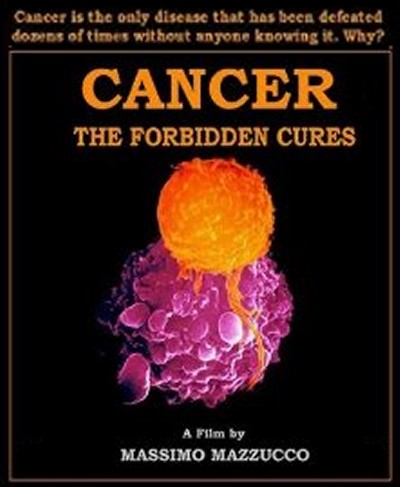 |
Here are two reviews from Amazon regarding Cancer - the
Forbidden Cures
Positive Review of
'Cancer - the Forbidden
Cures'
This
documentary provides the viewer with multiple natural
alternatives to, or supplements to, traditional
medicine. It also exposes the dangers of traditional
medicine.
However, the
viewer is struck by the abundance of documented cancer
cures that were debated on television screens and in the
print media over a period of many decades, but the
American people have been kept in the dark about this
long-standing debate.
Clearly, the
government, the media, and the education establishment
do not inform, educate, and protect the public; instead
they serve the money changers to the detriment of the
public.
Negative
Review of
'Cancer - the Forbidden
Cures'
This review
is from: Cancer - The Forbidden Cures (DVD)
By joczerw, April 14, 2013
Don't be
fooled by this!
The DVD does not give any scientific evidence supporting
the effectiveness of any of the presented therapies.
According to the websites quoted below
these therapies have been
tested by reputable institutions and found no cancer
curing effects.
ESSIAC (done by Memorial Sloan-Kettering Cancer
Center)
Researchers found that Essiac did not make the immune
system more active and did not act as an anticancer
drug.'
HOXSEY Therapy (done by American Cancer Society)
In 1946, the National Cancer Institute reviewed 77 case
reports of Hoxsey's patients and concluded that none of
them met the criteria for scientific evaluation.'
A study published in the Journal of Naturopathic
Medicine involved 39 people with various types of cancer
who took the Hoxsey herbal treatment. Ten patients died
after an average of 15 months, and 23 never completed
the study. Six patients claimed to be disease-free after
4 years.'
GERSON Therapy (done by U.S. National Cancer
Institute, Cancer Research)
A review by the U.S. National Cancer Institute was
unable to find any evidence that Gerson's claims were
accurate. Similarly, several case series by Gerson
Institute staff published in the alternative medical
literature suffered from significant methodological
flaws, and no independent entity has been able to
reproduce the claims.'
Cancer Research UK states that
"Available scientific evidence does not support any
claims that Gerson therapy can treat cancer
'Gerson therapy can be very
harmful to your health.'
The case studies showed in the movie date back to
the 1980s or earlier than that. I am sure that
back in these days cancer
identification was very inaccurate as any masses could
have been mistakenly taken for it.
Therefore,
there is a high probability that any allegedly cured
patients did not have cancer at all. I also wonder why
the movie does not state how many people died after
starting either of the therapies?!
Every year lots of money is being fuelled into the
cancer research as it is an extremely expensive disease
to be tackled for any country. So the claims that drug
companies don't want to research any `natural remedies'
is ridiculous. There is an endless list of drugs whose
active ingredients are derived from natural products.
Lastly, when looking at cancer from the economical point
of view it becomes obvious that no country wants to lose
young people to a disease as that decreases the amount
of working elite.
So whenever
you hear scientifically unproven theories, try to
read a bit more about them...
Wikipedia
is a good place to start.
|
 |
Disclaimer
Rick Archer's Note:
Before I begin, you have my absolute word that I am
reporting what I read or saw as honestly as I am capable
of. However you must always keep in mind that I
have no way to verify the accuracy of other people's statements.
You may take my word when
I relate my own personal experience, but when I do
things like refer to this Documentary or to something I
read on the Internet, definitely keep your guard up.
I am
not the Source of any of this information. I am merely
your Guide.
I am
going to take you down the same trail I explored and I
will be happy to share my conclusions. However, it
is still up to you to decide whether you believe this
material or not.
|
One
more thing.
I wish
to warn about the dangers of over-generalization.
To me, the stories I am about to discuss are appalling
and even downright sinister.
But at
the same time I still firmly believe the vast majority
of the people in the medical field are decent, caring
individuals with a deep sense of integrity and concern
for their patients.
As my
cousin Rick Griffiths said so eloquently (he is the
supervisor of an ICU unit),
"Anecdotally,
I can say that nearly all of the physicians I work with
are very hardworking, well-intentioned people.
Oncologists in particular are constantly borderline
basket cases. They are burned out
physically and emotionally from fighting a mostly losing
battle with so many patients."
Amen to
that. So please keep in mind that no matter how
many toes I step on with this article, deep down,
Doctors... and Nurses... and Researchers are still my
heroes. Thank goodness we have
these people.
Now
let's get started.
RA, July 2013
|
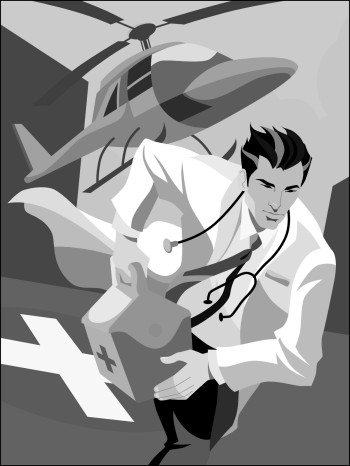 |
|
Big Business Takes over the Medical Field
The Forbidden Cures Documentary began by discussing
the Big Business aspects of cancer and the dependency of
today's medical industry on the money generated by the
current pharmaceutical model of treatment.
It started with the history of the
conflict between Empirical healers and Mainstream
Medicine.
Mainstream medicine refers to
the orthodox or commonly-accepted medical use of pharmacologically
active agents (drugs) or physical interventions (surgery) to
treat or suppress symptoms of diseases. The philosophy
is to drive the disease from the body.
Empirical treatment is medical
treatment based on the healer's observation or previous
experience with the problem. The idea is to test an
educated hunch and see if works... in other words, learn by
experience. The philosophy
is
to stimulate the body’s own
defenses to heal itself. Empirical
treatment is also called Holistic treatment and Alternative
treatment.
The AMA (American Medicine
Association) doctors are Mainstream and the
alternative healers are the Empiricists.
As you can see, simply by calling the
Empirical methods "Alternative", mainstream medicine puts
Empirical methods at a disadvantage. Anyone who uses
natural methods to cure becomes lumped with shamans,
medicine men, witch doctors, faith healers, and, of course,
everyone's favorite term... quacks.
If given a choice, my own personal
bias would always be to cure any disease by natural
remedies. The only problem is that I don't actually
know anyone with this kind of knowledge. Hence I use
mainstream medicine like everyone else.
That said, it really isn't as far-fetched as one
might think to believe a cure for cancer could be found in
nature.
Nature's
Medicine Chest
Times have
changed, but more than half of the world's population
still relies entirely on plants for medicines.
Plants supply the active ingredients of most traditional
medical products. Plants have also served as the
starting point for countless drugs on the market today.
One need look no further than penicillin derived from
fungi to realize the value of looking to nature for
cures.
Researchers generally agree that natural products from
plants and other organisms have been the most
consistently successful source for ideas for new drugs,
since nature is a master chemist. Drug discovery
scientists often refer to these ideas as "leads," and
chemicals that have desirable properties in lab tests
are called lead compounds.
Scientists estimate
that Earth is home to at least 250,000 different species
of plants, and that up to 30 million species of insects
crawl or fly somewhere around the globe. Equal numbers
of species of fungi, algae, and bacteria probably also
exist. Despite these vast numbers, chemists have tested
only a few of these organisms to see whether they harbor
some sort of medically useful substance.
Source:
National Institute of Health
You might be surprised to learn that
at one time the Empiricists and Mainstream were on even
footing. The Documentary said that in the late
Nineteenth Century, the popularity of these two radically
different approaches to healing people who were sick or
wounded were about equal. Furthermore, anyone who was
sick had a free choice of which approach to use.
The Documentary suggested this
situation changed at the turn of the century. Sometime
around 1900, there was a striking shift in the balance of
power. It began with the takeover of the medical
schools by moneyed interests. The AMA joined forces with
powerful financial forces to transform medicine into an
industry.
In particular, men like Andrew Carnegie, JP
Morgan, John Jacob Astor and John D Rockefeller offered medical schools large
grants. However, there was a catch. For the
money, was it too much to ask if the medical school would
accept 1 or 2 new people on their board of directors?
These men would only be there to make sure their money was
being spent wisely. So now people with an eye on the
cash register were seated at the table. The
Documentary claims these financial overseers
steered the entire
focus of medical research towards the pharmaceutical
industry where some real money could be made.
All the great teaching intuitions
began to teach the exclusive use of manufactured drugs.
Doctors were trained to use surgery, radiation, and
synthetic drugs in their attack upon cancer. The
increased use of surgery led to the need for more hospitals.
Furthermore the use of synthetic drugs to treat disease
increased dramatically over time... one or two drugs killed
the disease, two or three other drugs tried to minimize the
harmful side affects. The pharmaceutical industry and
the medical industry were now completely intertwined.
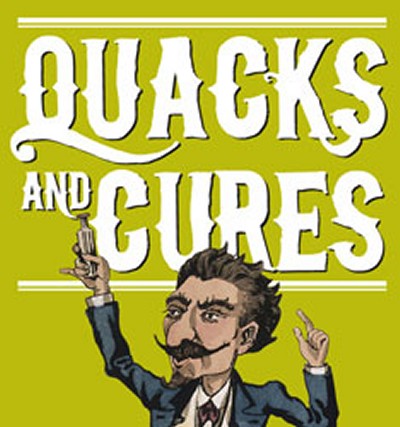 |
The Quack Hunt
Begins
At this point, the Documentary
claimed the AMA began a relentless crackdown on
anyone who refused to play by their rules.
This took place during the first half of the
Twentieth Century. Organized medicine labeled
the empirics as "quacks" and used questionable
tactics to drive them out of business.
The
Documentary
would go on to offer a compelling look at how the
AMA developed its stranglehold on the entire
industry by putting Alternative treatments out of
business.
Then came the most interesting
part of the Documentary. It went into great
detail over alleged AMA witch hunts... or quack
hunts if you prefer... against Rene Caisse, Harry
Hoxsey, and Max Gerson, three of the best-known
practitioners of Alternative Medicine. It told
the story of how these three people and others were
systematically driven out of business.
And why would the AMA even
bother? If these people were frauds, surely
their total lack of success would soon become
evident and people would abandon their treatment.
The AMA's stated reason to attack
the quacks was the noble attempt to protect naive
dying people from being exploited by medical
charlatans.
However, the Documentary
suggested the real reason was far darker.
All of the "alternative"
methods for curing cancer come from nature.
Apparently the law says that any medical cure that
comes from nature cannot be patented.
Since there was no money in a
natural cure, the game was to find a synthetic
method to treat cancer before any herbal tea or
magic mushroom could come along and upset the apple
cart.
|
| |
|
The Great Race to
the Cure
Theoretically competition
brings out the best in all of us. There have
been many great races in medical history. For
example, the controversy over who could be the first
to discover HIV was covered in the 1993 docudrama
And the Band Played On.
Never have the stakes been
higher than the search for the cure for cancer.
It would be one thing if it was just "Beta" versus
"VHS" or Microsoft versus Apple. But since there is
so incredibly much money involved, over the past
century, the make or break consequences of victory
and defeat have apparently brought out the worst in
certain shadowy nameless faceless figures.
|
The Documentary suggests the
drug interests were more than willing to play dirty.
It is one thing to lie, cheat, and steal a little,
but in this high-stakes game, mainstream medicine
decided to systematically eliminate all competition.
The dark forces would do
practically anything to suppress any possible
attempt to solve the cancer problem if it turned out
to be something they couldn't control or profit by.
That's the "Cancer Conspiracy" in a nutshell.
And here is the crippling
irony of it all. Not only does it appear that
there was an organized effort to suppress several
potential natural cures for cancer, the organized
medicine side was still completely unable to solve
the problem on its own.
It is one thing to kill off
the competition, but one would assume the winners
would have at least something as good or better to
offer. Not so. For the past century, the
pharmaceutical industry has been unable to find a
cure despite an incredible amount of effort... and
money.
|
 |
It all boils down to "Time"
For the record, mainstream
medicine has failed to produce a cure for cancer for
at least one hundred years. Meanwhile the beat
goes on. The drug industry suggests they might find
the right combination next month. Or maybe one
year from now. And so on. One never
knows. But at the moment, a solution does not
appear to be on the horizon.
|
 |
Considering the stakes, one
would assume the pharmaceutical industry would be
panic-stricken someone might beat them to the cure.
Considering their own "Turtle Pace", one would
assume they would be looking over their shoulder for
the rabbit in the race.
If only they had just
a little more TIME!
But as it turns out, there is
no rush. The most effective way to buy TIME is
to kill off all competition. Now you're
catching on. When no one is racing against
you, what's the hurry?
The Documentary made a good case
for its argument that the alternative approaches to
curing cancer were stifled because they posed a
serious threat to Big Pharma, a derogatory
nickname given to the medical drug industry.
No one wanted to see the money train derailed by
some cheap herbal tea remedy or non-patentable magic
mushroom treatment. And let us not forget tree bark
and apricot seeds.
|
The Nightmare Moment
Back in 1937, the crisis
the drug industry feared the most almost came to pass.
A simple, little known woman named Rene Caisse
came within 3 votes of getting the Canadian legislature to
approve her cancer cure made out of herbs. Caisse
claimed it was an ancient Indian remedy that was producing
startling results... and she had a lot of people who agreed
with her.
This was Big Pharma's worst nightmare
unfolding right before their eyes!
[Side Note: Before I tell the story of
Rene Caisse, let me say that
nothing I write will ever be as
persuasive as the documentary itself. The Documentary
actually has real people speaking candidly on film about the
problems they experienced. Nothing I write can be more
compelling or dramatic than listening to a dying woman as
she screams at a panel
of lawmakers.
It upset me to hear her demand these men show some respect for her god-given right to
let her use any "damn illegal drug" she pleased in her dying
days. What, she added, is this pompous talk
about protecting her "safety" when she is almost dead?!!
So if at any point you become fascinated
with my story, I highly recommend you go watch the
documentary yourself and make up your own mind.
Cancer
- The Forbidden Cures]
Essiac - The Herbal Tea
that
Became a Nightmare
(To view the Documentary's Essiac
story,
fast forward to 22:40 minutes)
In 1923 Rene Caisse, a
Canadian nurse, observed that one of her doctor's
patients, a woman with terminal breast cancer, made
a complete recovery. Since the word 'terminal'
is generally assumed to mean 'hopeless', naturally
Ms. Caisse's curiosity was aroused.
Rene found that the woman had used a herbal remedy
given to her by an Ojibwa Indian 'medicine man'.
The woman gladly passed on the little-known herbal
formula to Ms. Caisse.
The recipe originally
consisted of just four common herbs - Sheep Sorrel,
Burdock Root, Slippery Elm Bark and Rhubarb Root,
but was later expanded with the inclusion of Blessed
Thistle, Kelp, Red Clover and Watercress to make it
even more potent.
With her doctor's permission,
Nurse Rene began to administer the herbal remedy to
other cancer patients. She was amazed by the
remarkable success.
Essiac, 'Caisse'
spelled backwards, became the name given to the
herbal tea Nurse Caisse successfully used to treat
thousands of cancer patients from the 1920s until
her death in 1978.
Unfortunately the Canadian
medical establishment did not take kindly to this
nurse administering the remedy directly to anyone
with cancer who requested her help.
However, Caisse conducted her business in a rural
outpost where there wasn't much scrutiny.
Thanks to her positive reputation, the local
authorities found a way let her operate under the
radar. She was not allowed to
receive direct payment for her services. In
addition, all prospective patients had to bring
along a doctor's notice of cancer. If Nurse
Caisse met those conditions, she was welcome to
continue.
|
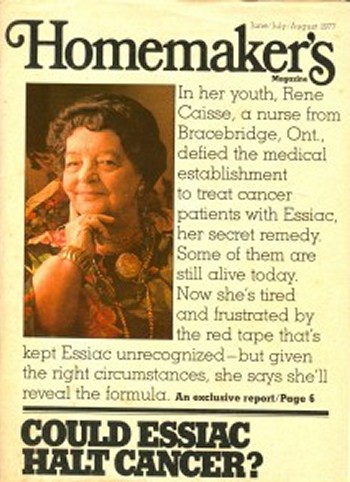 |
The Documentary suggests that she
brought remissions to hundreds of documented cases, many
abandoned as "hopeless" or "terminal" by orthodox medicine.
Rene Caisse aided countless more in prolonging life and
relieving pain. Caisse obtained remarkable results against a
wide variety of cancers by administering Essiac through hypodermic injection or oral ingestion.
At 27:45 of the Documentary, a claim
was made that a group of doctors offered Caisse a million
dollars to sell them her cure. However they failed to
give her assurances how the formula would be used.
Caisse did not trust these men and turned them down.
As word of Rene Caisse and her magic
potion spread, her patients began a campaign to have her
medicine legalized so it could be offered to the entire
country. 55,000 signatures were
collected on a petition to present to the Canadian
Parliament to encourage these men to legalize its use. In
1937 the Royal Cancer Commission conducted hearings about Essiac. Incredibly, Essiac failed by just 3 votes to be approved as
an officially sanctioned cure for cancer.
The drug industry had barely dodged
the one thing it feared the most - a legal treatment for
cancer that might actually work and could not be patented.
The pressure got to Caisse. She
had a nervous breakdown. It was just too much to stand
up to these powerful forces.
When she recovered, Caisse went
underground - literally. She no longer operated from a
local hospital, but rather from her own basement. She
would grind up her potion of roots and herbs in her basement
and treat people outside the eyes of the Establishment.
It didn't work. She was arrested more than once on
various trumped up charges.
Rene Caisse, a woman who comes across
on camera as fragile and decent, was incredulous to find she was being
constantly harassed and punished for simply trying to cure
people. However, what hurt the most was the
unwillingness of the medical community to take note of all
the people given up for dead who continued to live.
Why did these critics refuse to give her credit for saving
lives? It literally broke her heart to think she had a
cure for cancer and no one in power would listen.
At this point (30 minutes) the
Documentary pointed out that there were some prominent
physicians who voiced their support for the efficacy of
Caisse's medicine. For example, Dr. Charles Brusch, founder
of the prestigious Brusch Medical Center in Cambridge,
Massachusetts, declared that "Essiac has merit in the
treatment of cancer". Brusch was not a "quack".
He was about as mainstream as they come. Dr. Brusch
was a former physician to President John F. Kennedy and a
close personal friend.
Dr. Brusch revealed that he had cured
his own cancer with Essiac. In a notarized statement made on
April 6, 1990, Dr. Brusch testified,
"I
endorse this therapy even today for I have in fact cured my
own cancer, the original site of which was the lower bowels,
through Essiac alone."
Unfortunately for Rene Caisse, she was
eventually discredited by mainstream medicine.
As Wikipedia, the staunch supporter of
mainstream medicine, states,
“Essiac is an herbal tea promoted as an alternative
treatment for cancer and other illnesses. As with many
alternative remedies, the exact composition of essiac is
unclear, but it reportedly contains burdock, Indian rhubarb,
sheep sorrel, and slippery elm bark. Some formulations may
also contain watercress, blessed thistle, red clover, and
kelp.
Essiac's purported effect on cancer has been reviewed by
several major medical and scientific bodies, including the
U.S. Food and Drug Administration, the National Cancer
Institute, and the American Cancer Society. All have found
no evidence that essiac has any effect against cancer. The
U.S. FDA described essiac as a "Fake Cancer 'Cure' Consumers
Should Avoid".
Researchers at Memorial Sloan-Kettering
Cancer Center have written that Essiac continues to be a
popular cancer therapy despite unsubstantiated claims of its
effectiveness.”
The Documentary concluded its
section on Rene Caisse by showing bus after bus
after bus pulling up to the woman's residence to
help the woman celebrate her 90th birthday.
These people were all former
patients of Rene Caisse who had gathered en masse to
thank the woman for her help with their cancer.
There were hundreds of people!
You would have to be very
cynical not to be affected by this clip
detailing the overwhelming outpouring of affection
and gratitude.
I have
no idea whether Essiac works or not. But after
viewing the Documentary, I have no doubt whatsoever
that a lot of ordinary people believed in her.
This was a sincere, decent woman who was badly
mistreated by the Medical Establishment of her
country.
|
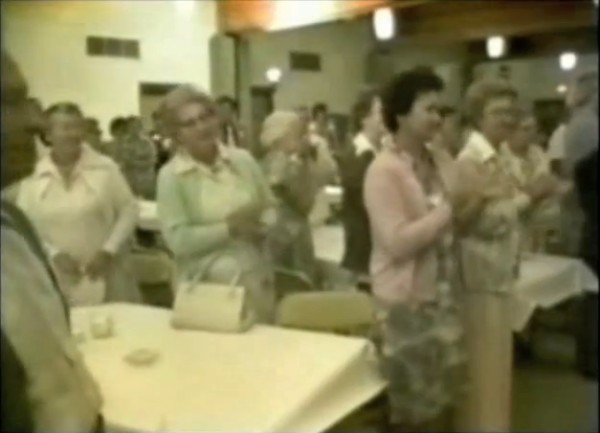 |
|
Why was Essiac
Suppressed?
After the dramatic encounter with
the Canadian Parliament, Essiac never came close again to
gaining mainstream acceptance.
Over the next 40 years, Essiac was tested by reputable labs several
times. Each time it was found wanting. For
example, Rene Caisse tried to have her magic potion tested
by a mainstream treatment center in New York known as
Memorial Sloan Kettering or MSK for short. Founded in 1884
and heavily funded by John D. Rockefeller, you can't get
much more "mainstream" than Sloan Kettering.
Unfortunately, every time the results
came back with a shrug of the shoulders. "Nothing conclusive was discovered".
It used to be that Caisse was harassed
at every turn. However, since she is dead now,
everything has become very polite these days.
Let's see what Wikipedia has to say.
"Essiac's
purported effect on cancer has been reviewed by
several major medical and scientific bodies,
including the U.S. Food and Drug Administration, the
National Cancer Institute, and the American Cancer
Society.
All have
found no evidence that essiac has any effect against
cancer.
Researchers
at Memorial Sloan-Kettering Cancer Center have written
that Essiac continues to be a popular cancer therapy
despite unsubstantiated claims of its effectiveness.”
In other words, the damn thing doesn't
work, but lots of people like it anyway. Nothing like
killing it with kindness.
The Susan B Komen website has this to
say about Essiac:
A laboratory at Memorial
Sloan-Kettering Cancer Center tested Essiac samples
(provided by Caisse) on mice during the 1970s. This
research was never formally published, and there is
controversy regarding the results, with some accounts
noting no benefits, and others reporting significant
effects (including an account by Dr. Brusch).
Questions were later raised of
improper preparation of the formula. Caisse subsequently
refused requests by researchers at Memorial
Sloan-Kettering and the U.S. National Cancer Institute
for access to the recipe.
[Side Note: The best summary of the
mainstream medical opinion of Essiac can be viewed on the
MD Anderson web site.]
When I told my wife that I had learned of
an incident that suggested men had deliberately suppressed a
potential cure for cancer, she looked at me skeptically and
said, "Every doctor I've ever met has tried his or her best
to treat my illness. Why would anyone deliberately
eliminate a cure for the worst disease of all?"
Good question. One might indeed ask why a well-meaning woman
with an entire legion of supporters was ignored. Why
would a group of faceless men want to stop an entire army of
well-wishers who begged their government to legalize the
herbal tea?
The answer is there are no profits in any
drug found in nature.
Anything that comes from
nature cannot be patented.
Let's explore that idea.
Essiac and the FDA
From what I gather, those herbs in the
picture are the ingredients for Essiac. The law says
that these natural substances cannot become someone's
private domain.
The law that says
"Anything that comes from
nature cannot be patented"
has been around for some
time.
In fact, this law recently came back into the
news during a 2013 DNA dispute. Here is an article to
read.
|
 |
According to the Supreme Court,
Nature cannot be patented
|
June 17, 2013
In a unanimous ruling on Thursday, Supreme Court
justices held that human DNA isolated from a
chromosome cannot be patented because it is a
product of nature, The New York Times reports.
Justice Clarence Thomas, writing for the court, said
“there would be considerable danger” in granting
patents on natural phenomena because that approach
would “inhibit future innovation”.
“It would be at
odds with the very point of patents, which exist to
promote creation.”
However, the court also held that
synthetic DNA created in a laboratory is new and distinct
from DNA and therefore patentable.
Source
|

|
|
|
Drug companies cannot patent anything
natural or profit from nutritional therapy as they can from
chemical substances which they alone control through
patents.
Laetrile is a good example. It is a
naturally-occurring substance found in many foods, including
apricots. Hydrazine sulfate is a very cheap substance that
is readily available.
For that exact reason - "a cheap
substance" - the cynics
say that Essiac Tea never had a chance.
Thanks to that rule about nature and
patents, the people who call the shots, aka Big Pharma and
their doctor cronies,
are not interested in any natural cure
for cancer.
A conservative estimate says it might
take 20 million dollars of research to get the FDA to
declare a bunch of Essiac weeds from the woods "legally
safe".
Who's gonna spend 20 mill for a cheap
little pill?
|
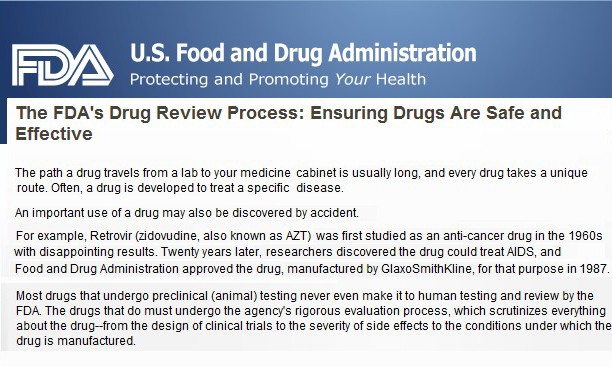 |
All Along the Watchtower
"Legally safe"... let's
talk about that for a moment.
Unless the FDA declares Essiac
"legally safe", it cannot be marketed except on the black
market or through some Internet marketing trick. You
definitely can't buy it in a pharmacy.
As it turns out, the FDA is the modern
weapon that guards the Watchtower. Today the FDA protects
Big Pharma against the terror of another herbal tea
meltdown. There are those who claim that the Essiac
situation in the 1930s paved the way for the massive Laetrile takedown
in the 1970s.
Since Essiac won't be made available
without TESTING (thanks to the FDA), the pharmaceutical
industry can relax. It has a chokehold on any
competition.
This gives Big Pharma all the time it needs to
plod its way to the Holy Grail of cancer cures.
|
 |
The Essiac legalization process was a close call.
In fact, some termed it a "wake-up call".
Back in the first half of the 20th
Century, the AMA had a much harder time
discrediting the so-called quacks.
They played dirty with all kinds of intimidation such as police arrests, law suits in the
courts and nasty stories in the media.
However, what
the AMA didn't have was enough authority to stop these brush
fires in their tracks. The Essiac disaster was the
last straw. The AMA needed a new weapon to put these
upstarts where they belonged.
The FDA became the weapon Big Pharma needed for
protection against another nightmare. It showed up shortly after
the Essiac near-miss. Now wasn't that convenient?
So convenient in fact you wonder if maybe it wasn't a
coincidence.
In 1938, the government strengthened
the Food and Drug Administration's powers to regulate
anything and everything. The FDA became responsible
for protecting and promoting public health through the
regulation and supervision of food safety, tobacco products,
dietary supplements, prescription and over-the-counter
pharmaceutical drugs, medications, vaccines,
biopharmaceuticals, blood transfusions, medical devices,
electromagnetic radiation emitting devices, and veterinary
products.
It's important to note that pet
supplies are regulated too in case someone decided to slip
some Essiac in there.
The FDA
doesn't dare let a dog be cured of cancer by eating Alpo.
That
was supposed to be a joke, incidentally, but to my
surprise I discovered there actually is Essiac for
Pets. Good grief. Here is what it says:
Your cats and dog’s well being begins with world
renowned Canadian formulas that have been
trusted for centuries. TRU-PINE® for Pets is
made from Jacques Cartier’s original pine bark
formula Since 1935. ESSIAC® for Pets is made
from Nurse Rene Caisse’s original herbal formula
Since 1922.
Now take
a note of the disclaimer below:
 |
 |
President
Franklin Roosevelt signed the new Food, Drug, and Cosmetic
Act into law in 1938.
The new law significantly
increased federal regulatory authority over drugs by
mandating a pre-market review of the safety of
all new drugs, as well as banning false therapeutic
claims in drug labeling.
This was a powerful bill. Under the
guise of protecting the public against bad drugs, no new medicine could be marketed unless the FDA gave permission.
In addition, soon
after passage of the 1938 Act, the FDA began to designate
certain drugs as safe for use only under the supervision of
a medical professional. Now many
drugs that were previously available over the counter suddenly required a
doctor's prescription. And who do you suppose
benefitted from that rule? I'll let you guess.
Catch 22 Hopelessness
One can certainly imagine shadowy men
having a nervous breakdown over the close call with Essiac.
It is indeed within the realm of possibility these men
decided they needed a better way to stop those dangerous
quacks in the future. Why not get the politicians and
the LAW on their side?
In 1938, less than a year after the
1937 Canadian vote on Essiac,
the FDA became the Medical Establishment's new ace in the hole.
And that's the way it has been ever
since. Today
the drug manufacturers have the law on their side to
eliminate any serious competition for a natural cancer cure.
For example, there are rumors the FDA beat Laetrile into submission with
one legal threat after another.
No drug can be marketed without FDA
approval, so
Essiac would have be tested first.
After all, the FDA says its
illegal to use
anything unless it has been tested
for efficacy and safety. Gee,
is Essiac safe? It's an herbal tea for crying out
loud! Essiac is probably a lot safer than half the
stuff we eat, but unless the FDA says it is "legally safe",
fuhgedaboutit.
The problem is that no one is going to
test Essiac. Why bother? There is no money in
it.
No
drug company is going to bother
spending
20 million dollars testing any substance from nature.
Why would any lab invest 20 million dollars testing
something they can't even patent? How absurd!
The testing might be good for humanity, but for the drug
company, it would be an utterly senseless waste of money.
Consequently there’s
a Catch-22
hopelessness to all of this.
Any cure
from nature will always be condemned
by the FDA
as an unproven and potentially
unsafe cancer cure.
And
since an unproven cancer cure is
illegal to use, how
is someone supposed to legally experiment with it to see if
it might have value?
And even if something seems to work,
nothing from nature -
regardless of how effective it might
promise to be
- will ever be proven safe or
effective according to the FDA standards
because no one is going to
spend the money to fund the test.
Essiac, a simple concoction of herbs
gained from the Ojibwa Indians.… 55,000 signatures... Missed
being legalized by 3 votes... Next year, the FDA received
the power to prevent anything from being marketed without
its approval.
Game over. Big Medicine wins.
The FDA was the missing piece. Now the Monopoly was
safe.
FDA - Friend or Foe?
Allegations of FDA Collusion
with the Pharmaceutical Industry
The Essiac vote took place in 1937, 74 years
ago. Today, 74 years later, Mainstream Medicine
still has not produced a cure for cancer.
Who cares? Big Pharma has
all the time in the world. Thanks to the FDA, Time is
on its side.
Thanks in large part to its
FDA-guaranteed monopoly, Big Pharma has
never been more profitable. In fact, industry critic
Marcia Angell claims that
Big Pharma makes money off cancer drugs that don't even
work.
In her article
What
Ails the FDA?, Dr. Angell cites the example of Vioxx.
Read for yourself.
|
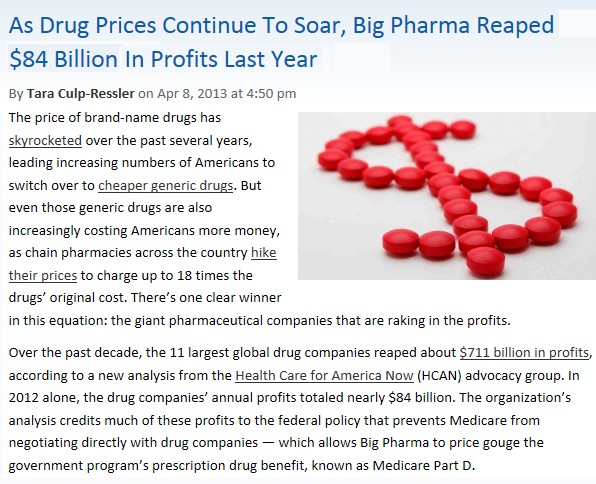 |
Question: What
Ails the
FDA?
Answer: Payola
By Marcia Angell
| Boston Globe
March 10, 2005
LET'S FACE IT. The FDA is doing a poor job of ensuring
that prescription drugs are safe and effective. It
approves drugs that offer only minimal benefit, and then
sometimes leaves them on the market long after they've
been shown to be dangerous.
Take Vioxx, the hugely popular arthritis drug that was
taken off the market in September and now might return
if an FDA advisory panel has its way. This is one of a
class of drugs called COX-2 inhibitors (Celebrex and
Bextra are the others) that are supposedly easier on the
stomach than over-the-counter remedies like Advil or
Aleve.
Vioxx was rushed to market in 1999
even though it was never shown to be any better for
relieving pain than the older drugs.
The FDA then let it stay on the market for four years
after a clinical trial showed it was probably more
likely to cause heart attacks or strokes than to prevent
stomach ulcers.
It could have insisted that the
manufacturer, Merck, immediately conduct a large-scale
study to better define the risks and that the company
add a warning in its direct-to-consumer ads that made Vioxx
sound like a miracle drug. The
FDA is now implying it doesn't have that authority, but
it does.
Why is the nation's most important regulatory agency
appeasing the pharmaceutical industry instead of
protecting the public? One answer is that it is on the
industry's payroll. Literally.
Since 1992, by an act of Congress, drug companies pay
the FDA "user fees," which are earmarked almost entirely
for speeding up drug approvals. Consequently, the agency
now behaves as though that were its main job, not
ensuring safety and effectiveness.
Even worse, the 18 standing advisory committees of
outside experts who help the agency decide whether drugs
should be approved include paid consultants to drug
companies.
|
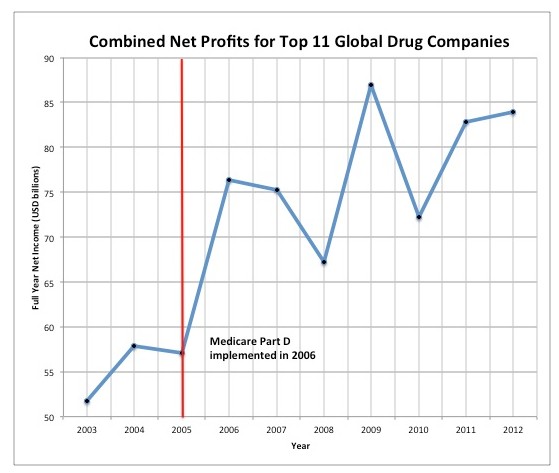 |
They are supposed to recuse
themselves from decisions that directly affect the
companies they work for, but that rule is regularly
waived on the dubious grounds that their expertise is
uniquely valuable. (Imagine judges not recusing
themselves from cases in which they have a financial
stake on the grounds that their expertise is
invaluable!) The advisory committee that originally
recommended approval of Vioxx, for example, consisted of
six people, four of whom had received waivers because of
their "potential for a conflict of interest."
Vioxx is estimated to have caused
tens of thousands of heart attacks or strokes. It is
hard to see how the panel could have concluded that the
benefits were worth those risks, especially given the
fact that taking over-the-counter Prilosec in addition
to an older pain reliever would probably have provided
as much protection from stomach ulcers. The fact is,
this was a public health disaster.
Their conflict of interest is
real, not "potential." The excuse that they are
indispensable is not only self-serving but insulting to
the experts who don't consult for industry.
The FDA is vital to our public health. We need to
strengthen it as an independent watchdog, not an
industry lapdog.
So what's my point? The
Conspiracy theorists said the monopoly began when the
financial barons first began to place their money men on the
board of the the medical schools. Soon enough the main
focus of medicine was shifted to synthetic drugs.
Today the drug companies have figured
out a way to get their own consultants on the board of the
FDA as well. If we can believe Dr. Angell, these
people do not act in the public interest. They act in
the best interests of their own drug companies.
If you believe those profit
statistics, someone is DEFINITELY acting in the best
interests of the drug companies. And if you believe
Dr. Angell, they are making money even off drugs that don't
even work.
Meanwhile, your medical bills
skyrocket. Your health insurance skyrockets.
And no one can stop them.
It is obvious that a select group of
people have a great deal of control while the vast majority
of patients and practitioners have little say in the matter.
Time and again suspicious things take place where profits
obviously take priority over people.
Follow the Bouncing Ball
Ralph Moss is considered the man who
did more to pull back the curtains on the ruthless practices
of the cancer industry than any other single person.
His 1996 book,
The Cancer Industry, is considered the Bible by the
forces opposed to the practices of the drug companies, et
al. This is an excerpt from a 1994 interview.
Source
LL: You were mentioning that
patients hear cure rate when something very different is
being talked about. And we can go into the poor
statistics for the standard modalities. They are not
that effective, which is why everyone is looking for an
alternative.
RM: When I was at MSK a lot of very weird things started
to happen to me, there was this cognitive distance
between what I was told, and was writing about
treatment, especially chemotherapy, and what I was
seeing with my own eyes. One time I heard the head of
the intensive care unit give a talk in which he bragged
about how he had one of the lowest mortality rates in
his unit. I went out to lunch with him, where he became
a bit inebriated, and told me how he managed to get
those statistics -- by wheeling the dying patients out
into the corridor where they died and didn't sully our
departments record.
LL: Why would people manipulate
the cure rate?
RM: Cancer is big money. You have
to understand that cancer is 1/9th of the overall health
budget in the United States. The last figures I have
seen from the American Cancer Society of money spent on
cancer indirectly or directly at 107 Billion dollars.
LL: AIDS is a 4 billion
dollar...
RM: Research, but you can't
come compare AIDS to cancer. Cancer we are talking about
well over a million cases a year, not counting skin
cancer which probably equals that.
LL: One million new cases
discounting skin cancer?
RM: Right. About 630,000
people die every year of cancer in the US, and it really
is an epidemic disease. We have got a tremendous
industry. Every one of those people who is getting
cancer and dying of it is going to be treated, and these
treatments are extremely expensive. Chemo is tens of
thousands, sometimes hundreds of thousands of dollars. A
bone marrow transplantation which is basically another
way of giving chemotherapy or radiation can run to about
150,000 dollars per person, and is almost never
effective. It kills about 25%..
LL: Why carry on doing it?
RM: Because of the money,
which is tremendous. If you look at the board of
directors of MSK (Memorial Sloan Kettering), you will
find that the drug industry has a dominant position on
that board. One company in particular, Bristol Myers,
which produces between 40-50% of all the chemotherapy in
the world, and they have top positions at MSK hospital.
LL: Doesn't that constitute
a serious conflict of interest?
RM: They are selling their
own drugs to that particular hospital but they have
written into the by-laws of the center that it does not
constitute a conflict of interest to sell their company
drugs to the center. They get around it by not taking a
salary. They are not paid, they are volunteers. Look
what happens. You have a man like Benno Schmidt, who was
first head of the president's cancer panel under Nixon,
then becomes head of MSK. He then goes on using the
knowledge he gained at MSK to set up his own drug
company to make tens of millions of dollars.
|
|
Gary Glum - Madman or Victim?
Every
now and then I allude to "harrassment by faceless nameless men", but
don't go much further.
The
story of Gary Glum is a good example of what I am referring to.
Gary Glum is a man who claims that he has been persecuted for trying
to carry on the tradition of Essiac. Apparently his problems
began he wrote a book about Rene Caisse titled Calling of an
Angel.
Glum claims that Nurse Caisse entrusted him with the
Magic Formula. Ever since then, Glum says his life has been a
complete hell. I will share two sources that contain Glum's
allegations.
On the right is an
example about how Gary Glum says he has been harassed. I found
this article at a
UK web site called the Truthseeker. What you see on
the right is about half the article. I listed the URL if you
wish to read the complete article.
The second source is a 1992 interview between Elizabeth Robinson and Gary Glum.
As you will see, Dr. Glum made one assertion after another claiming
government suppression.
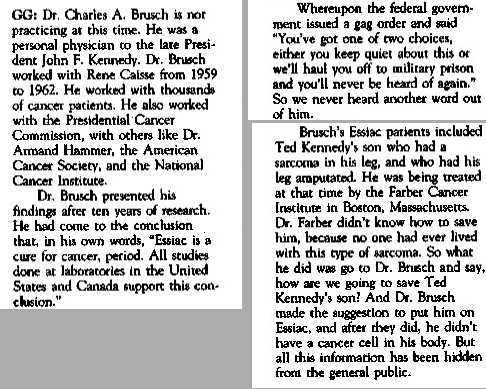
So what is my point? You have to ask yourself if this
stuff is real or if this stuff is complete garbage. We don't
know who Gary Glum is from Adam. Maybe he has a history of
mental illness. Maybe these rants are the delusions of a crackpot.
If you believe
Conspiracies are a possibility, then maybe you are receptive to
these claims. But even the most open-minded person will agree
these stories are a bit far-fetched.
On the other hand, a
pattern begins to emerge when you have one person after another
saying similar things. As the saying goes, "Where there's
smoke, there's fire".
Let's
add the Gary Glum story to the mounting file of circumstantial
evidence pointing to a conspiracy.
If you wish, you can
read the
entire interview yourself.
|
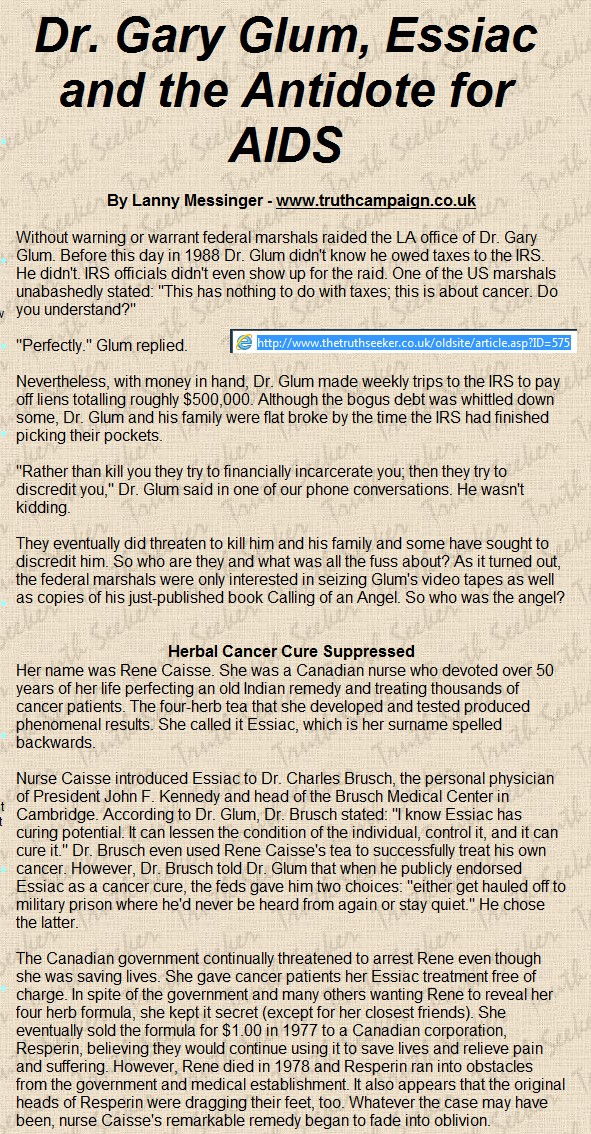 |
The Harry
Hoxsey Witch Hunt
After Rene Caisse, the Documentary
moved on to the story of Harry Hoxsey (35
minutes).
Unlike Rene Caisse, an unsophisticated
woman from a small town who wasn't mentally equipped to cope
with the strong-arm politics, Harry Hoxsey was said to be a
natural born fighter who feared no one.
Hoxsey started out as a poor coal
miner. Then he came out of nowhere claiming to cure
cancer using a country remedy handed down within his family.
Somehow he built the largest privately-owned cancer
treatment center in America with 17 different branches at
its peak.
Naturally anyone who claims to cure
cancer invites scrutiny. Back in the Fifties, Hoxsey went
toe to toe with the AMA. He fought them tooth and nail
in the court of law.
The fight became increasingly
vicious. Hoxsey set the record for being arrested for
practicing medicine without a license more times than anyone
else in medical history.
The AMA would go on to label
Hoxsey the "Worst Cancer Quack of the Century".
Healer or Huckster? Let's
investigate.
|
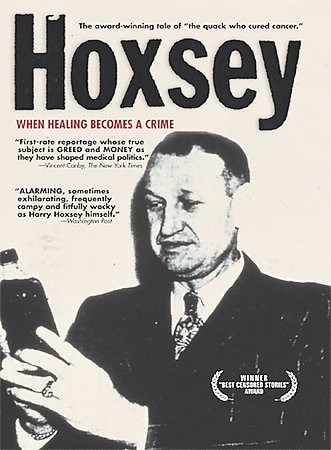 |
We will start the story of Harry
Hoxsey with a brief summary of his career written by Richard
Walters, one of Hoxsey's admirers. Please note I have
paraphrased some of this article. I have listed the
link if you wish to go to the source.
Source:
Harry Hoxsey:
Jailed For Curing Cancer,
written by Richard Walters
Harry Hoxsey (1901-1974)
was a self taught healer who cured many cancer patients
using an herbal remedy reportedly handed down by his
great grandfather. His
great grandfather was a veterinarian who discovered that
his prized stallion had an inoperable tumor.
Unwilling to put the animal to sleep until the suffering
began, the man put the horse in an isolated area of his
pasture. To his surprise, the tumor had
disappeared. The vet speculated that perhaps those
strange plants the horse had been chewing on had made
the difference. Noting those plants were not part
of the horse's normal diet, he began to experiment. Soon
he discovered distinct medicinal values in the plants.
As the legend goes, the great
grandfather passed the secret on to Harry Hoxsey.
By the 1950's, the
Hoxsey Cancer Clinic in Dallas was the world's largest
private cancer center.
Hoxsey treated people
using an herbal tea. Hoxsey's plant-based
remedies contain naturally occurring compounds with
potent anti-cancer effects. Hoxsey treated external
cancers with a red paste made of bloodroot -
a common wildflower-
mixed with zinc chloride and antimony sulfide.
Apparently, the Hoxsey
herbs have long been used by Native American healers to
treat cancer. This treatment was handed down from
North American Indians living along the shores of Lake
Superior who used the red sap from bloodroot to treat
cancer. The root stock
of blood root, a
spring-blooming flower, contains sanguinarine, an
alkaloid that has powerful anti-tumor properties.
Hoxsey's success brought him a
great amount of publicity. However, it also
brought him big trouble. In addition to patients
who flocked to Dallas from every part of the country,
the AMA began a smear campaign.
Harry Hoxsey was a wealthy man
before he ever got into medicine. Furthermore, he
was used to fighting back. Consequently he didn't
take the intimidation sitting down. He had the
wherewithal to stand up to the medical profession as
well as to the authorities. Hoxsey set the record
for being arrested for practicing medicine without a
license more times than anyone else in medical history.
In one two-year period, he was arrested more than 100
times! Then, ironically, the assistant district
attorney's brother got cancer. Now the Assistant
DA secretly sent his brother to Hoxsey. When his
brother was cured, the Assistant DA quietly stopped the
arrests.
FDA officials would go
to patients' houses, intimidate them, tell them they
were being duped by a quack, and take away their Hoxsey
medicines. The American Cancer Society added the Hoxsey
therapy to its blacklist of Unproven Methods in 1968,
using its customary phraseology about the lack of any
evidence that the treatment works.
Hoxsey would always fight back,
but alas, it was to no avail. For every friend and
convert Hoxsey made, another enemy stepped forward.
In particular, an AMA representative named Morris
Fishbein spent 25 years trying to take Hoxsey down. The
fight became so vicious and so personal that the
medical orthodoxy labeled Harry Hoxsey "the worst cancer
quack of the century." His herbal medicine was
denigrated as worthless. It was
called a
"simple bottle of
colored water" containing extracts of useless backyard
weeds. The Hoxsey Treatment was
laughed at as the worst scam since Snake Oil back in the
Wild West.
In the 1950s, at the
tail end of the McCarthy era, Hoxsey's clinics were shut
down. The AMA, NCI, and FDA organized a "conspiracy" to
suppress a fair, unbiased assessment of Hoxsey's
methods, according to a 1953 federal report to Congress.
This article made some
strong points to suggest the
Hoxsey treatment had some real promise. Whether
that is true or not we will never know because the AMA
eventually shut this guy down
lock stock and barrel.
That said, Hoxsey put up one hell of a
fight. The Documentary report about the rivalry was
great stuff. For example, the documentary told a story
of how Dallas Assistant DA Al Templeton arrested Hoxsey over
100 times. Then one day Templeton's brother Michael
got cancer. When Michael's condition worsened, Al
Templeton took his brother to Hoxsey on the sly. Sure
enough, according to the Documentary, Michael was cured.
From that point on, Al Templeton became Hoxsey's new best
friend.
Then the documentary covered a fight
to the death between Hoxsey and Morris Fishbein, the lead
hatchet guy for the AMA. Fishbein labeled Hoxsey "The
Worst cancer quack of the century".
With that statement, Fishbein had gone
too far. Hoxsey filed a libel suit against Fishbein
for saying things about him and his treatment that Fishbein
couldn't prove. Talk about turning the tables!
Amazingly, Hoxsey won. In fact, the Documentary
suggests Fishbein even had to step down from his position
after the trial.
However, the Fishbein trial was
Hoxsey's last hurrah. The AMA fought back, both in
legal courts and in the court of public opinion. The
AMA brought in its Big Gun, the FDA, and nailed Hoxsey on
violations of Interstate Commerce.
The FDA imposes sanitation
requirements on interstate travel and is charged with
preventing the spread of disease in all products -
vegetables, meats, drugs, etc. The FDA has the right
to criminally investigate fraudulent claims regarding
willfully shipping known adulterated goods across state
lines. The FDA can take action against the interstate
marketing of any drug in which the "standard of strength,
quality, or purity" of the active ingredient is not stated
clearly on the label.
The FDA claimed Hoxsey was allowing
his "untested, potentially unsafe drug" to cross state lines
to his various clinics in the different states. That
violated Interstate Commerce laws. One day the feds
put locks on the doors of every one of Hoxsey's 17 clinics.
They shut him down cold and he was never able to rally.
Hoxsey was like King Kong trying to futilely swat away those
planes shooting him down. Hoxsey fought as hard as he
could, but he seemed to have an entire army of opponents
allied against him.
Hoxsey ultimately lost the fight.
His
one-time highly successful
Dallas clinic was forced to
close its doors in 1960. After
Hoxsey passed away, his successors began to operate a
clinic somewhere in Mexico. Good luck getting your
insurance to cover a visit.
I have no idea whether any of this
story is true, but I will say the entertainment value was
over the top. The Documentary made the Hoxsey-Fishbein
vendetta seem as vicious and personal as the Hatfields and
McCoys.
Before we move
on, let's see what Wikipedia has to say about Harry Hoxsey.
Hoxsey
Therapy -
From
Wikipedia
“Reviews by major medical bodies, including the U.S. Food
and Drug Administration (FDA), the National Cancer
Institute, the American Cancer Society, M. D. Anderson
Cancer Center, and Memorial Sloan-Kettering Cancer Center,
have found no evidence that the Hoxsey Therapy is an
effective treatment for cancer. The sale or marketing of the
Hoxsey Method was banned in the United States by the FDA on
September 21, 1960 as a "worthless and discredited"
remedy and a form of quackery.
|
Discrediting Doctor Gerson
Now that we have covered
Rene Caisse and Harry Hoxsey, now it is time to turn our
attention to Max Gerson.
The
Conspiracy theorists claim you
can’t trust the medical people who are in control because
they are the bad guys
who don't want anyone to find a cure for cancer unless they
can profit from it.
Do I think there is a
Conspiracy in the Medical World? I am not a medical person nor am I an
investigative reporter. The fact of the matter
is that I don't have one shred of hard evidence.
I could not give you the name of a single member of
the Conspiracy even if I wanted to. Whatever I
know, you know, because I have taken you down the
same path I followed.
What I will say is there seems
to be an
awful lot of circumstantial evidence. It
appears
Somebody has gone to a lot of effort to
discredit people who seemed to be sincerely trying
to find a cure for this dread disease.
For the record, I think Rene
Caisse was the real deal. I can't say whether
her tea worked or not, but I am convinced she
sincerely believed in it. Harry Hoxsey I am
not so sure about, but there is no denying he had a
lot of supporters.
If the stories of Harry Hoxsey and
Rene Caisse were not enough to convince you that something
is rotten in Denmark, perhaps the story of Max Gerson will
push you over the edge. Max Gerson was easily the most
controversial person in the Documentary's attempts to prove
a conspiracy exists.
|
There are some persuasive reasons to believe Max Gerson was
the real deal.
-
Gerson wasn't an outsider like
Hoxsey and Caisse. Gerson was a bona fide
classically trained doctor.
Gerson was not only a graduate of prestigious German medical schools,
he had better credentials than many of the people
trying to discredit him. Gerson explained he had
made empirical discoveries and wanted to test his cure,
but no one would listen.
-
Gerson's diet therapy clearly held
promise. There is a well-documented study that
showed Gerson used his diet to healed 446 out of 450
patients who had 'incurable' skin tuberculosis.
-
Unlike Caisse and Hoxsey, Gerson
wrote a book about his career as a doctor and as a
cancer healer. It's there with plenty of case
histories for everyone to evaluate.
-
Gerson appeared before a Senate
committee in 1946 and gave testimony that was very
well-received. In fact, it was so well-received
that the AMA nearly had a heart attack.
-
Unlike the others, Gerson didn't
inherit his treatment from an Ojibwa medicine man or a
19th century horse vet... he actually developed it
himself. Gerson not only explained in medical terms how
he developed his treatment, he explained why he believed
it worked.
-
Finally, as you will see, despite
his very powerful enemies, Gerson had some very
impressive friends. One man said this about Gerson:
"I
see in Max Gerson one of the most eminent geniuses in
the history of medicine."
That man was Dr. Albert Schweitzer, the distinguished
winner of the 1952 Nobel Peace Prize.
Just some quack, eh? The story
of Max Gerson was definitely the most fascinating story in
the entire cancer documentary. You can go watch it
yourself. Fast forward to the 49 minute mark.
|
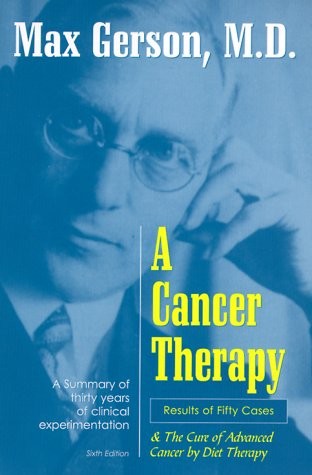 |
The Dissenters
Max Gerson was the creator of the
Gerson Therapy. This was the name given to a diet
regimen that claims to be able to cure even severe cases of
cancer. The regimen consists of a special diet, vegetable
juice, coffee enemas, and various supplements.
As Gerson's critics like to point out,
his therapy appeals to those who believe a "natural cure"
exists for cancer and most other diseases. Defenders
of the Gerson Therapy like to claim that 'special interests'
have suppressed this cure.
Theoretically the Gerson Therapy
appeals to cancer patients who are extremely fearful of or
violently opposed to surgery, radiation, and chemotherapy.
The Gerson Therapy appeals to cancer patients who have been
told that science-based medical treatments have no hope for
them. Due to their desperate desire to continue
living, they are willing to grasp at any far-fetched,
last-ditch hope to survive.
Strong words. Don't you hate
being called a sissy for preferring a natural cure over
chemo?
Not surprisingly, Wikipedia has little
good to say about Gerson. You are welcome to
read
Wikipedia on Gerson for yourself. Or you can
settle for this brief excerpt.
“Max
Gerson (1881 – 1959) was a German physician who developed
the Gerson Therapy, an alternative dietary therapy, which he
claimed could cure cancer and most chronic, degenerative
diseases.
Gerson
described his approach in the book A Cancer Therapy:
Results of 50 Cases.
However, when Gerson's claims were examined by the National
Cancer Institute (NCI), they found that his records lacked
the basic information necessary to systematically evaluate
his claims.
The
NCI concluded that Gerson’s data showed no benefit from his
treatment.
The
therapy is scientifically unsupported and potentially
hazardous.”
Well, that pretty much sums it up, huh?
They didn't come right out and say it,
but the Wikipedia summary implies
this Gerson fellow was
either misguided or even possibly
dangerous.
Or was
he?
I wouldn't be in any hurry to pull the
plug on this guy just yet.
In the
Forbidden Cures Documentary, the story of Max Gerson
stands out as very compelling evidence of unscrupulous
harassment by mainstream medicine.
On the other hand, people would say
Max Gerson was a fraud who never submitted his material for
scientific testing. Yes, maybe the AMA went a little
far, but they were just trying to protect innocent people
from exploitation by this clever charlatan.
Some
people say Gerson was cheated out of a Nobel Prize not just
for his cancer cure, but also for his skin tuberculosis
cure. Others say he was just a lost and misguided old
man who could barely speak English.
Welcome to the controversy. So
was this man a quack or a genius? I don't know the
truth, but I do consider his story quite remarkable.
Let's begin our exploration of the
mystery with this brief biography of Max Gerson supplied by
the
Gerson Institute.
Who Was Max Gerson?
There are some who consider Dr.
Gerson to be father of the nutrition movement.
Whether this is true or not is open to debate, but there
can be no question he was one of the first men to
discover the importance of diet and nutrition in health.
Thanks to his own personal trial and error research,
Gerson became an early champion for the benefits of diet
and detoxification.
Max Gerson, M.D., was born in
Wongrowitz, Germany, in 1881.
He attended the universities of
Breslau, Wuerzburg, Berlin, and Freiburg.
Suffering from severe migraines since childhood, Dr.
Gerson focused his initial experimentation with diet on
preventing his headaches.
In 1910, Dr. Gerson came across a
book written by an Italian doctor who claimed that some
migraine headaches could be relieved by a milk diet,
while others could be relieved by a
fresh-fruit-and-vegetable diet.
Gerson first tried the milk diet, but without success.
He then put himself on the fruit-and-vegetable diet,
with an emphasis on apples, both raw and cooked. In a
short period of time, his migraines disappeared.
He further experimented by adding salt and a variety of
other substances to the fruits and vegetables, only to
find that his migraines returned very quickly, sometimes
within a half-hour. Gerson was discouraged from
using salt. His studies also led him to eliminate
meat from his diet.
One of Dr. Gerson’s patients
discovered in the course of his treatment, that the
“migraine diet” had cured his skin tuberculosis. This
discovery led Gerson to further study the diet, and he
went on to successfully treat many tuberculosis patients
using his Gerson diet. His work eventually came to the
attention of famed thoracic surgeon, Ferdinand
Sauerbruch, M.D., in the late 1920s.
Under Sauerbruch’s supervision, Dr. Gerson established a
special skin tuberculosis treatment program at the
Munich University Hospital. In a carefully monitored
clinical trial, 446 out of 450 skin "end stage"
tuberculosis patients treated with the Gerson diet
recovered completely. This was quite an
accomplishment for a disease then considered
“incurable”. Dr. Sauerbruch and Dr. Gerson
simultaneously published articles in a dozen of the
world’s leading medical journals, establishing the
Gerson treatment as the first cure for skin
tuberculosis.
At this time, Dr. Gerson took note
of the increasing Nazi influence in Germany. He
left Germany in 1933 and emigrated first to Vienna.
Gerson spent two years in Vienna, then in 1935 he went
to France, associating with a clinic near Paris before
moving to London in 1936. Shortly after that, he moved
to the United States where he settled in New York City.
In 1938, Dr. Gerson passed his boards and was licensed
to practice in the state of New York. For twenty years,
he treated hundreds of cancer patients who had been
given up to die after all conventional treatments had
failed.
In 1946, Gerson demonstrated recovered patients before
the Pepper-Neely Congressional Subcommittee, during
hearings on a bill to fund research into cancer
treatment. Although only a few peer-reviewed journals
were receptive to Gerson’s then “radical” idea that diet
could affect health, he continued to publish articles on
his therapy and case histories of healed patients.
In 1958, after thirty years of clinical experimentation,
Gerson published A Cancer Therapy: Results of 50
Cases. This medical monograph details the theories,
treatment, and results achieved by a great physician.
Gerson died in 1959
Here is more
information about Max Gerson. The following
excerpt was written by
Robert Ringer.
Origins of the Gerson
Therapy
“One
of the earliest truth messengers to feel the sting of the
American Medical Association's (AMA) attacks was Dr. Max
Gerson, a German immigrant born October 18, 1881 in
Wongrowitz, Germany.
Gerson
attended the Universities of Breslau, Wurzburg, Berlin, and
Freiburg from 1901 to 1906. He then served as an intern at a
number of hospitals and clinics throughout Germany.
Doctor Gerson suffered from terrible
migraine headaches at the time; they were hereditary. Every
doctor told him the same thing: that it was incurable and
that he had to live with it.
Gerson did not
accept that. He decided to find his own way to
heal himself, so he began
to study and research. After two years, he
read in an Italian magazine
about a woman who changed her diet and got better.
This was
1910. The claim
was that some migraine headaches could be relieved by
a milk diet, while others could be relieved by a
fresh-fruit-and-vegetable diet.
Gerson
was confused because no one
had ever told him anything about
the importance of diet. He was discouraged with everything
else so he decided to give it a shot. He decided to build a
diet on process of elimination. He
started off with milk because babies drank it all the time,
but it didn't work. He was as sick as ever.
Then it occurred to him that
nowhere in nature do animals drink milk after they’ve
weaned, especially milk that came from another species.
Maybe milk wasn't the right idea.
Gerson
decided to try vegetarian, or vegan, food.
He put himself on the fruit-and-vegetable diet, with
an emphasis on apples, both raw and cooked.
Apples were widely available in Germany so he
ate nothing but apples. He ate
raw apples, apple sauce, apple juice, baked apples, etc.
To his surprise, he got better.
In a short period of time, his migraines disappeared.
He added one food to his diet at a
time so he could determine what triggered the headaches.
He further experimented by
adding salt and a variety of other substances to the fruits
and vegetables, only to find that his migraines returned
very quickly, sometimes within a half-hour.
Out went the salt.
If something
didn’t agree with Gerson, he’d
have a migraine within twenty minutes. He eventually worked
out what he called his migraine diet.
This migraine diet, unbeknownst to
him, would later cure some of the
most chronic diseases known to man.
After
serving in World War I, Dr. Gerson set up practice in
Bielefeld, Germany, as an
internist and specialist in nervous diseases. Expanding his
experimentation with diet, he was successful in curing 446
out of 450 supposedly incurable cases of lupus (an
autoimmune disorder characterized by skin lesions).
For
his pioneering work in this area,
Dr. Gerson was hopeful that he might earn the Nobel Prize
for Medicine. To his disbelief, he instead was challenged by
the German medical establishment and hauled into court.
The charge was that he was not a
specialist in skin disorders, and therefore his work in this
area was in violation of the German medical code.
After
having similar success with "incurable" tuberculosis, he
again was challenged by the establishment medical community.
Unfortunately, he was unable to defend
his belief that his natural diet therapy did in fact
cure tuberculosis. Due to the
worsening political climate, Dr. Gerson, who was
Jewish, had to flee his homeland.
After
his escape from Germany, Dr. Gerson lived in Vienna and then
moved to Ville d'Avray near Paris to become chief of staff
of a sanatorium. Finally, after a short stay in England, he
emigrated to the United States.
In New
York, at age fifty-five, Dr. Gerson had to
start all over. He had go to school with first and
second graders to learn how to speak English, a prerequisite
for his earning a medical license. He received his license
in January 1936 after passing the New York State Board
examination.
After
setting up practice in New York City, Gerson continued his
diet experiments with incurable arthritis and cancer
patients. His success rate was astonishing even to him, and
it made the medical establishment very uneasy.
On
July 3, 1946, Dr. Gerson demonstrated his healing techniques
before a U.S. Senate subcommittee headed by Senator Claude
Pepper, bringing with him five cancer patients whom he had
cured with his organic fruit-and-vegetable therapy.
The
AMA went berserk - to put it mildly.
In its
November 16, 1946 edition, the Journal of the American
Medical Association stated the following:
"Fortunately for the American people, this presentation
received little, if any, newspaper publicity." Later, in its
January 8, 1949 edition, the same publication declared,
"There is no scientific evidence whatsoever to indicate that
modifications in the dietary intake of food or other
nutritional essentials are of any specific value in the
control of cancer."
The
AMA pressured hospitals, laboratories, and other doctors not
to do business with Dr. Gerson. This made it difficult for
him to document his work because he was prevented from
bringing his patients to established medical facilities for
testing.
The
final blow, however, was when Dr. Gerson was invited to be a
guest on a radio talk show hosted by the popular Long John
Nebel. At the time, Nebel was famous for bringing all sorts
of oddballs onto his show. On any given night, Nebel
would interview UFO hunters, parapsychologists, science
fiction writers, and psychics. Therefore Gerson,
oft-criticized as a cancer hoax, expected
he would fit right in.
To his surprise, he received a
respectful hearing. The show lasted for several
hours, and the public's response was overwhelming.
The
result? The radio network was threatened by the AMA, and Nebel was fired the next day.
Finally, on March 8, 1959, after years of harassment from
the AMA and other segments of the establishment medical
community, Dr. Max Gerson, the ultimate medical messenger,
died of pneumonia.”
Five Situations That
Suggest Suppression of Max Gerson
1. Raymond
Swing
The Robert Ringer
article above referred to two incidents that smacked of AMA
suppression. The first incident concerned Gerson's 1946
testimony before a
U.S. Senate subcommittee headed
by Senator Claude Pepper. I decided to
look it up.
I found a very interesting story written
about Raymond Gram Swing, a man
I had
never heard of before.
Swing is
relevant to our story about Gerson.
According to Wikipedia, Raymond Gram Swing (1887–1968) was
an American print and broadcast journalist. He was one of
the most influential news commentators of his era, heard by
people worldwide as a leading American voice from Britain
during World War II.
During
the buildup to WW II, he began to broadcast on European
affairs, Swing emerged as a strong voice of opposition to
Adolf Hitler and Fascism. As the Nazis rose in power and
influence and began to threaten Europe, his show was
increased to five broadcasts a week. Swing also gave a
number of lectures in the United States and abroad on the
dangers of Fascism.
Because of his prestige and credibility, Swing was chosen to
be chairman of the Council for Democracy, a group founded in
1940 to support American rearmament and combat domestic
isolationism. Funded by Henry Luce, the Council was led by
Harvard political science professor Carl Joachim Friedrich
and Charles Douglas Jackson, vice president of Time
magazine.
During
the war, Swing was reportedly the nation's highest-paid
radio commentator. After the war he worked at ABC, BBC and
the Blue Network.
So what
does
Raymond Gram Swing have to do
with Max Gerson? Well, here is what
Wikipedia
said:
After thirty years
with ABC, in 1946 Raymond Gram Swing was released
from his position two weeks after reporting on the
Senate bill known as the Pepper-Neely bill, that
advocated a dietary treatment for cancer.
Wikipedia confirmed
Swing was involved in Claude Pepper's 1946
Senate hearing. In addition, Wikipedia hinted
at the Gerson "Diet" Therapy. However, it omitted
any mention of the Raymond Swing - Max Gerson
connection.
Surely that wasn't the same
hearing where Senator Claude Pepper praised Max
Gerson??
It took a little
digging, but I found more
information on another web
site. I can't be positive, but I
think Raymond Swing was being treated at the time
for cancer by Dr. Gerson.
It was
probably Raymond Swing who asked Gerson to appear
before the Senate Committee.
In July 1946, ABC
news commentator Raymond Swing,
also an ABC radio
journalist, proposed that Dr. Gerson be called to
testify before the Senate which was debating a bill
to allocate funds for cancer research.
This broadcast
resulted in Swing's firing
due to pressure from both the pharmaceutical and the
American medical establishment.
Despite his 30 years
as a well-respected correspondent, Swing was
blacklisted simply because
he reported a cure for cancer had been found
using Dr. Gerson's
treatment regimen.
|
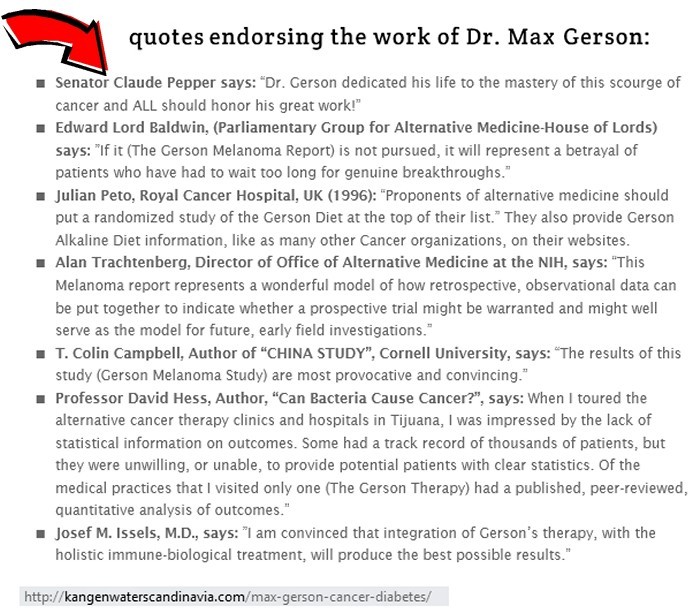 |
Swing wasn't just "blacklisted", he
was fired.
Now isn’t that
interesting... a man was fired from his
job simply for reporting the facts of a Senate hearing?
So what
happened at that hearing to create such bitter enemies?
Gerson brought
five patients with him who had a positive response to the
Gerson Therapy. All five had been told by their former
doctors that there was no longer any hope for them.
Not only were they still alive, but they had no current
evidence of cancer. Their presence was "living proof"
that Max Gerson might be on to something.
Based on
Gerson's testimony before the Claude Pepper Senate
committee, Raymond Swing could not wait to share the news
that the most promising cure for cancer so far had just
surfaced. His listening audience responded in a
powerful way. Suddenly the phones at ABC began ringing
off the hook. Given a hint of hope on a disease that
most took for a death sentence, the requests for more
information was simply phenomenal. The AMA felt
threatened, so it decided to pressure ABC to punish Swing
for his impertinence.
Raymond Swing
had been a much-praised reporter who had worked for ABC for
30 years. Furthermore he had done nothing wrong other
than report the testimony. So what? Swing was
fired. A faceless person in the dark clearly had some
serious influence.
Source:
Suppressed inventions, type in '1946' to find
the story
Nothing good ever came from Gerson's testimony before the
Senate Subcommittee. Although a 227 page report,
document number 89471, was produced, the copies of this
report were never distributed by the Senate and it received
no coverage in medical journals
Dr. Gerson never received one cent from any charitable
organization such as the American Cancer Society to either
prove or disprove his findings, even though these groups
claimed they were "researching" a cure for cancer.
|
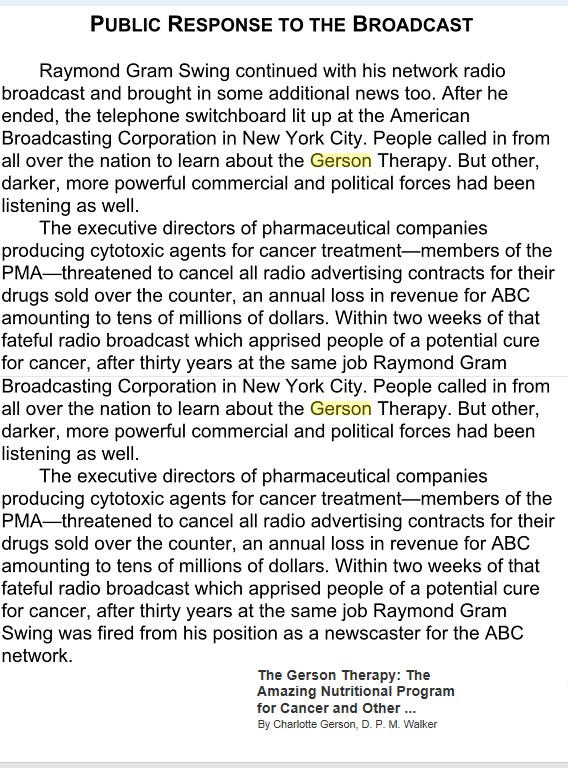 |
2. John
Nebel
Besides the story about the
Raymond Swing firing, Robert Ringer suggested a
second man was fired for allowing
Gerson to speak. His name was John Nebel.
"The
result? The radio network was threatened by the AMA,
and Nebel was fired the next day."
This Amazon
picture shows there
can be no doubt the interview
took definitely took place. |
 |
What is odd about the firing of Long John Nebel is
that he was famous for interviewing every "kook" in
the book.... occultists, alien abductees, psychics,
ghost hunters, you name it. More people tuned
into this popular show to laugh at the latest wacko
than to actually take these fringe people seriously.
So one would assume the Gerson Watchdogs would ease
up on their vigilance. After all, no one is
going to believe this crazy cancer doctor with
coffee enemas!!
Not so. I think we can
assume the Faceless Watchdogs took this interview
very seriously.
It is interesting to note it
says there is only one recording of Max Gerson
speaking in public. Is it possible that after John
Nebel and Raymond Swing got fired, no one would
dream of risking their career to interview Gerson
again?
|
3. Wikipedia Shuns Alternative Medicine in General
A very
curious
part of my research was devoted to keeping track of
Wikipedia's unwavering support for Mainstream Medicine.
Ordinarily Wikipedia is an
extremely useful reference.
I am a big fan - I use Wikipedia all the time to write my
Travel stories. To show my gratitude, I have
contributed to Wikipedia at Christmas time for the past
three years. And I am sure I will contribute again.
That said,
despite all the warm fuzzies I feel for
Wikipedia, I could not help but notice that
Wikipedia has a determined bias in favor of orthodox medicine.
I can't
imagine Wikipedia toeing the line any more dutifully.
In fact, Wikipedia might as well just say, "The following article
was written by the American Medical Association".
For example,
Mr. Skeptical gave me a list of "alternative medicine"
people to check out.
It turned
out that every single person
identified by Mr. Skeptical as blacklisted by the AMA
had a distinctly negative
Wikipedia writeup. I decided this
could not be a coincidence. It became obvious to me
that somebody was determined to make sure that Wikipedia had
nothing good to say about the medical renegades.
I actually went to the trouble of
documenting my point. Look for yourself. Always
remember it is effortless to check my work. Just type
the same names into Wikipedia if you don't believe me.
Royal
Rife
“Rife's
claims could not be independently replicated, and were
ultimately discredited by the medical profession in
the 1950s. Rife blamed the scientific rejection of his
claims on a conspiracy involving the American Medical
Association (AMA), the Department of Public Health, and
other elements of "organized medicine", which had
"brainwashed" potential supporters of his devices.”
Coley's Toxins
“According to an article in the Iowa Orthopedic Journal,
Coley's toxins were opposed by the medical establishment
despite his reports of good results, because his
reports were not believed to be credible.”
Ernest
Krebs
“Ernst Theodore Krebs was an American biochemist. He is
known for promoting various substances as alternative
cures for cancer, including pangamic acid and amygdalin.
He also co-patented the semi-synthetic chemical compound
closely related to amygdalin named laetrile, which was
also promoted as a cancer preventative and cure.
His
medical claims about these compounds are not supported
by scientific evidence and are widely considered
quackery.”
|
Luigi
di Bella
“During the late 1980s, Di Bella developed a cocktail of
drugs, vitamins and hormones (Melatonin, ACTH and
Somatostatin) which he argued would be useful in
fighting cancer. Following national exposure in 1997 and
1998, several cancer patients from around Italy traveled
to his clinic seeking access to a "miracle cure". In
1998 Italian medical authorities declared his treatment
to be without scientific merit.
"The working group of the Board of Health considers that
it has no evidence of the effectiveness of "multitherapy
Di Bella" and therefore does not recommend a new
clinical trial; this could be not only ineffective but
also harmful to the patients by denying them (or
procrastinating) access to anti-cancer drugs of proven
effectiveness."
This method can have side effects such as nausea,
vomiting, diarrhea, diabetes mellitus, increased blood
sugar levels, low blood pressure, sleepiness and other
neurological symptoms.”
Stanislaw Burzynski
“The
Burzynski Clinic is a clinic in Houston, Texas, offering
unproven cancer treatment.
The clinic has been the focus of much criticism due to
the way its unproven antineoplaston therapy is promoted,
the costs for cancer sufferers participating in
"trials", significant problems with the way these trials
are run, legal cases brought as a result of the sale of
the therapy without board approval, and for other
causes.
There is a scientific consensus that antineoplaston
therapy is unproven and of little promise in treating
cancer. The Memorial Sloan-Kettering Cancer Center has
stated: "Bottom Line: There is no clear evidence to
support the anticancer effects of antineoplastons in
humans."
Issels
Treatment
The Issels Treatment is an alternative cancer treatment
based on the ideas of Josef Issels. The Issels
Treatment is considered ineffective against cancer by
the American Cancer Society, and is listed as a "Dubious
Treatment" by the alternative medicine watchdog website,
Quackwatch.
Johanna Budwig
“Cancer
Research UK have stated that there is no reliable
evidence to show that the Budwig diet helps people with
cancer.
Proponents of the Budwig protocol often claim that she
was nominated for a Nobel Prize either six or seven
times. However, the names of the nominees are
never publicly announced, and neither are they told that
they have been considered for the Prize. All nomination
records for a prize are sealed for 50 years from the
awarding of that prize. As there are no limits on
nominations, any university professor in the world may
nominate as many people as he or she chooses—thousands
of people are nominated for these awards each year.”
Let
me make it clear that I have no idea of the effectiveness of
any cure or the integrity of any person named above. I
have simply copied and pasted what Wikipedia said.
My point is to illustrate
that someone has gone to considerable
effort to systematically
discredit people who
have tried different approaches to
curing cancer.
From what I gather, manipulation of
Wikipedia content is fairly common.
Here's an excerpt from a blog I found
related to the subject.
The Dark Side of Wikipedia
Biased manipulation runs
wild on Wikipedia, and the extent to which
it influences the pages of that site will probably
never be known.
Do all of these Wiki-Wars Really Matter? The
most accurate answer is probably "it depends." It's
very hard to gauge how much the public trusts
information on Wikipedia.
My gut tells
me that, sadly, a lot of people simply accept
whatever Wikipedia says without checking real
sources of information.
Yes, I am saying that
Wikipedia by its very nature is untrustworthy, even
if 95% of the information there is factual, which is
probably a big stretch.
However, I can say with some
certainty that businesses and individuals get a
great deal of value and suffer a great deal of loss
when Wikipedia contains positive/negative
information about them in a way very similar to Google or
other search engines.
(November
20th, 2007 - Posted by randfish to White Hat /
Black Hat) Source:
The Moz Blog
4. Wikipedia Deliberately Edits its Profile of Max Gerson
Max Gerson has been dead for 50 years,
but someone is going to a lot of trouble to undermine his
credibility even today. I found evidence that Max Gerson
is currently the
victim of some very serious Wikipedia manipulation.
I came across a web page titled “The
Hidden Wikipedia: How to Find
Deleted Material about Nutritional Medicine”.
This
article documented how Max Gerson’s original Wikipedia page
had undergone a serious transformation to
undermine his credibility.
Here is the
link; you don't have to
take my word for any of this.
Here are
some excerpts.
“May 11,
2010
There
is nothing quite like a paper trail, and Wikipedia has one.
Consequently, you can read for yourself all the
material that has been added, and then deleted.
Let’s
take for example material that was deleted from Wikipedia's
page about
Max Gerson, M.D.
Dr.
Gerson is widely known for the nutritional cancer therapy
that bears his name. Gerson's principal biographer is his
grandson,
Howard Straus.
Mr.
Straus tells the Orthomolecular Medicine News Service of
some interesting experiences he has had with
Wikipedia
bias:
"Some
years ago, on seeing that the pages for Dr. Max Gerson and
the Gerson Therapy were only stubs (short place-holders with
little information on them), I took it upon myself to flesh
out the pages.
I
thought Wikipedia was fairly neutral on balance, so I put in
all the information that I could, and kept it factual with
references, citations, and literature links.
Within
a month, the following had happened:
My
information was labeled as "biased" and "unreliable" because
I am Dr. Gerson's grandson and biographer. There appeared a
big red flag at the top of the article labeling the
neutrality of the articles I wrote as
"dubious."
Furthermore, the photograph of my
grandfather that I had posted was removed.
Provable, referenced facts, with dates and places, all
suddenly became "claims," even the quote from no less than
Nobel Laureate Albert Schweitzer, M.D., who famously
said: "I see in Dr. Max Gerson one of the most eminent
geniuses in medical history."
Dr.
Schweitzer and his wife were patients of Dr. Gerson,
making this a first-hand account from a rather reliable
source. Nevertheless Dr. Schweitzer’s comment had
been removed
from Wikipedia.
In
fact, all my links, references and citations were removed.
They were replaced by links to the American Cancer
Society and National Cancer Institute, which offer only
criticism of the Gerson Therapy.
Even
quotations from published scientific papers were removed.
Attempts to rectify these actions were immediately
overwritten.
It's
easy enough to show the progression of the pages, since
Wikipedia displays former edits on request, dated and
documented.”
There’s more. If you are curious, you can go read the
rest yourself.
The Hidden Wikipedia
5. Wikipedia makes no mention
of Gerson's Greatest Accomplishment
In 1927, Max Gerson tested his diet in
a scientifically-controlled experiment on people with
incurable skin tuberculosis. These trials took place
in Germany in conjunction with other physicians.
Dr. Patricia Spain Ward, Ph.D., a
medical historian at the University of Illinois at Chicago,
wrote about this aspect of Gerson's work in her
History of the
Gerson Therapy:
The historical record shows that
progress lagged especially in cancer
immunotherapy – including nutrition and
hyperthermia – because power over professional affiliation
and publication (and hence over practice and research)
rested with men who were neither scholars nor
practitioners nor researchers themselves, and who were
often unequipped to grasp the rapidly evolving
complexities of the sciences underlying
mid-twentieth-century medicine.
Nowhere is this maladaptation of professional structure
to medicine’s changing scientific content more
tragically illustrated than in the American experience
of Max B. Gerson (1881-1959), founder of the best-known
nutritional treatment for cancer of the pre-macrobiotic
era.
A scholar’s scholar and a
superlative observer of clinical phenomena, Gerson was a
product of the German medical education which Americans
in the late 19th and early 20th centuries considered so
superior to our own American system that all who could
afford it went to Germany to perfect their training.
In 1924 Gerson's success in treating tuberculosis of the
skin brought an invitation from the noted thoracic
surgeon, Ferdinand Sauerbruch, to test Gerson's diet in
a special lupus clinic to be provided by the Bavarian
government at the University of Munich.
As Sauerbruch recounts it in his autobiography,
446
patients out of 450 recovered - once he had discovered
and put an end to the smuggling of sausages, cream and
beer to the patients in the late afternoons (Sauerbruch,
1953, 167-171 ).
|
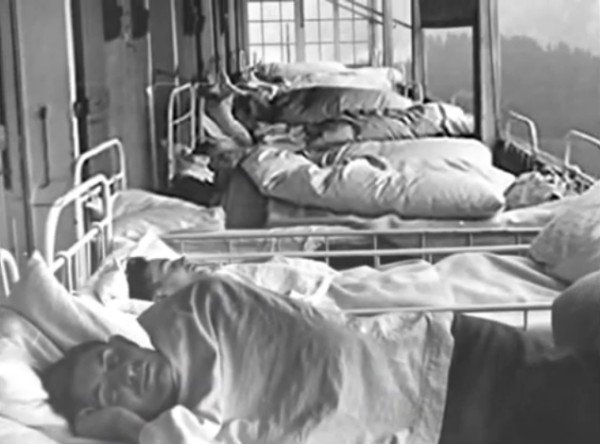 |
Unless one has a medical background,
the magnitude of this accomplishment might not be
understood. So let's dig a little deeper.
In those days, tuberculosis was
typically a death sentence. For example, in his book,
Incurable and Intolerable: Chronic Disease and Slow Death in
the 19th Century, Jason Szabo wrote:
"Throughout the Nineteenth
Century, no incurable disease rivaled Tuberculosis, the
undisputed captain of death.
Many scholars have remarked
that tuberculosis was to the 19th century what cancer
was to the 20th, the most widespread and most feared
deadly disease. It was called "consumption" then, and
even appeared in popular literature, drama, and opera,
where it claimed many a tragic heroine and hero. More
importantly, it was the leading cause of death in the
U.S."
Gerson's study states that he
cured 446 patients out of 450 of
incurable skin tuberculosis.
In other words, the man accomplished a medical miracle.
One would think a major accomplishment
like this would at least rate a mention in a person's
Wikipedia profile. There can be little doubt Gerson's
study took place - there are references to the study in many
different places.
So what exactly did Wikipedia say?
By 1927, Gerson was specializing
in the treatment of tuberculosis, developing the Gerson-Sauerbrach-Hermannsdorfer
diet, claiming it was a
major advance in the treatment of tuberculosis
How generous of them.
As I have
said repeatedly, I find it
curious that every single cancer renegade has a
distinctly negative Wikipedia
presence.
Even before I discovered
The Hidden Wikipedia
article, I had already come to the conclusion that
someone favoring the medical establishment had
been editing these pages.
The Hidden
Wikipedia story made
it obvious my instincts were
right.
Someone
with a serious agenda is deliberately going
out of their way to suppress any possible positive
information about Max Gerson as
well as other practitioners of Alternative Medicine.
|
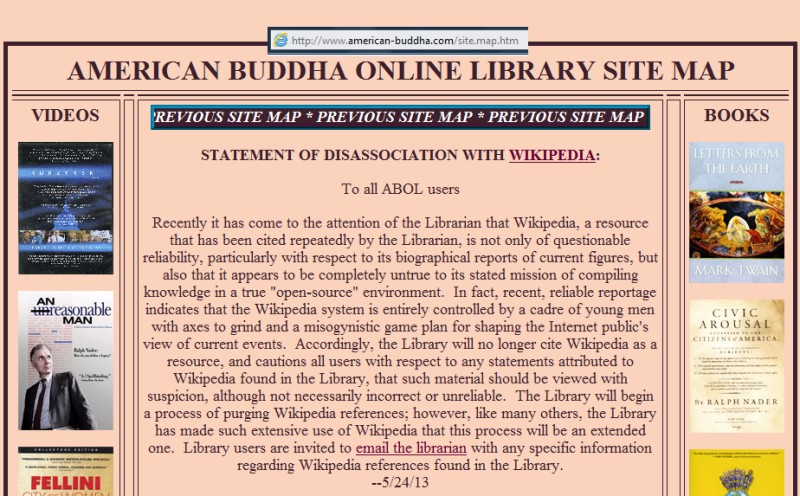 |
Oh, and there's one more
thing.
Why on earth would Wikipedia delete a reference to
Albert Schweitzer?
If you are curious, I found
another page titled
Wikipedia Talks About Max Gerson. It
is difficult reading because it contains all kinds
of squabbles over the material deleted from Gerson's
page.
Here is an excerpt regarding
the Albert Schweitzer quote reflecting on Dr.
Gerson's work. It is an attempt to justify why his
"eminent genius" quote has been excluded:
We can't use an
unreliable source (a private website that
openly boasts of being for quacks!?!), but
the quote probably exists somewhere else on
the internet. I can imagine using this quote
as an example of a notable supporter of
Gerson. That's important enough for
inclusion. -- Brangifer (talk) 17:05, 29
April 2012 (UTC)
This is an
exceptional (though not entirely
unbelievable) claim, and thus requires very
solid sourcing (per policy). There are all
sorts of misattributed quotes floating
around the darker corners of the Internet
(and being echoed uncritically), so we
need a really good source here before
deciding whether to include this.
MastCell Talk 17:28, 29 April 2012 (UTC)
Schweitzer made that "eminent
genius" statement as part of eulogy he gave at Max Gerson's funeral. It seems absurd the hoops
Wikipedia expects Gerson loyalists to jump through
to get this compliment reinstated in his Wikipedia
profile.
I
say this is deliberate censorship
designed
discredit Max Gerson.
Wikipedia claims it is bending
over backwards to make sure everything is factual.
However, ultimately it leans so far in the direction
of orthodox medicine that in the end Wikipedia loses
its own
credibility.
|
| |
Dr.
Albert Schweitzer, Distinguished Winner of the 1952
Nobel Peace Prize
Today
Albert Schweitzer is largely
unknown to
anyone younger than 50.
However, back in the Fifties, Dr. Schweitzer was one
of the ten most famous men in the world. He
became
a household name
because he was the pre-eminent
humanitarian of the time.
Schweitzer spoke boldly of the dangers of atomic
research. He pricked the world's conscience
regarding the wide-spread apathy towards the
problems of Africa. He beseeched everyone to
develop a greater reverence for life.
A
man is ethical only when life, as such, is
sacred to him, that of plants and animals as
that of his fellow men, and when he devotes
himself helpfully to all life that is in need of
help.
Schweitzer didn't just say wonderful things, he went
out and did them. The world took notice when
he and his wife Helene opened a jungle hospital in
Lambarene, Gabon, on the coast of West Africa.
Schweitzer spent 60 years of his life healing
thousands and bringing world attention to Africa's
many plights. Although the mission was many
times beset by adversities that would have
discouraged a less dedicated man, it had grown at
his death to more than 70 buildings, 350 beds and a
leper village of 200.
Upon his
death in 1965, Albert Schweitzer was perhaps the
most widely admired and loved man in the world.
|
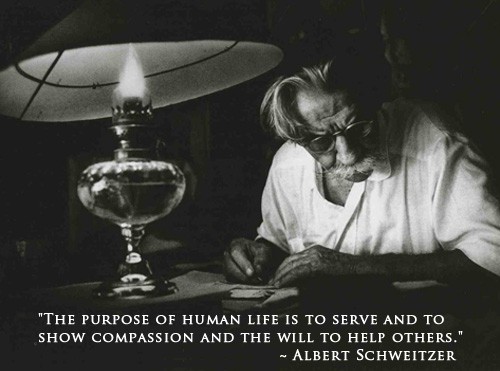 |
|
Schweitzer and
Gerson's Lifelong Friendship
Dr. Gerson cured Schweitzer’s wife Helene of
life-threatening
pulmonary lung
tuberculosis in 1932. She was extremely sick at the
time and in great danger of dying. Her
condition did not respond to conventional treatment,
so Schweitzer asked Gerson to step in.
According to epidemiologist
Gar Hildebrand, "With no antibiotic drugs, Gerson
cured Schweitzer’s wife Helene of lung tuberculosis
with diet-based immunotherapy. This was not the
carrot-juice and coffee enemas diet therapy being
promoted by today’s Gerson enthusiasts; it was weeks
of raw foods alternating with short bursts of
apple-potato days, plentiful orange-, grapefruit-,
lemon-, and grapejuice; the enemas were chamomile
with caffeine sodium benzoate."
Whatever Gerson did,
it worked. Helene Schweitzer recovered
completely and went on to live another 25 years.
Schweitzer was unbelievably
grateful. He never forgot what Gerson had done
for his wife.
During Helene's treatment, Schweitzer and
Gerson became friends.
They remained close even after
Helene recovered.
Gerson and Schweitzer
discovered they had much in common. They were
both German-trained physicians of a similar age.
They were both repulsed by the growing Nazi threat
and quick to leave Germany in the early Thirties.
Indeed, Gerson's foreboding was accurate. Every
member of Gerson's extended family would go on to
die in concentration camps. What a shame that
they failed to recognize how much danger they were
in until it was too late.
After Gerson and Schweitzer's
departure from Germany, the two men were now
expatriates living in different countries.
That didn't stop them. Gerson and Schweitzer
maintained a regular correspondence.
Dr. Schweitzer followed
Gerson’s progress, commenting with satisfaction as
Gerson's dietary therapy was successfully applied to
ailments such as heart disease, kidney failure, and
finally cancer as well.
In 1938, Gerson
came to Schweitzer's aid again
when he cured Schweitzer's 19 year old
daughter Rhena of a recurring
rare skin disease.
Then came the crisis. In
1947, Albert Schweitzer developed Type II diabetes.
This
was a very serious
illness, especially since Schweitzer was 75 at the
time. Type II diabetes is so debilitating that it
is
generally associated with a ten-year
deduction in life expectancy.
No
one seemed to be able to help him, so Schweitzer
turned to his old friend.
Gerson
got to work. The treatment of Schweitzer’s
condition lasted six weeks.
In the end, the cure was complete. Schweitzer was
incredibly grateful.
Thanks to Gerson’s intervention,
now Schweitzer was able to
return to his hospital in Africa
and resume his missionary work.
Schweitzer would go on to live 18 more years.
Max Gerson passed away in
1959. Helene Gerson asked Albert Schweitzer to
deliver the eulogy. Schweitzer wrote back that
he would be honored. In his letter to Frau
Gerson, Schweitzer wrote "Your husband was a medical
Christ who walked among us."
|
| |
|
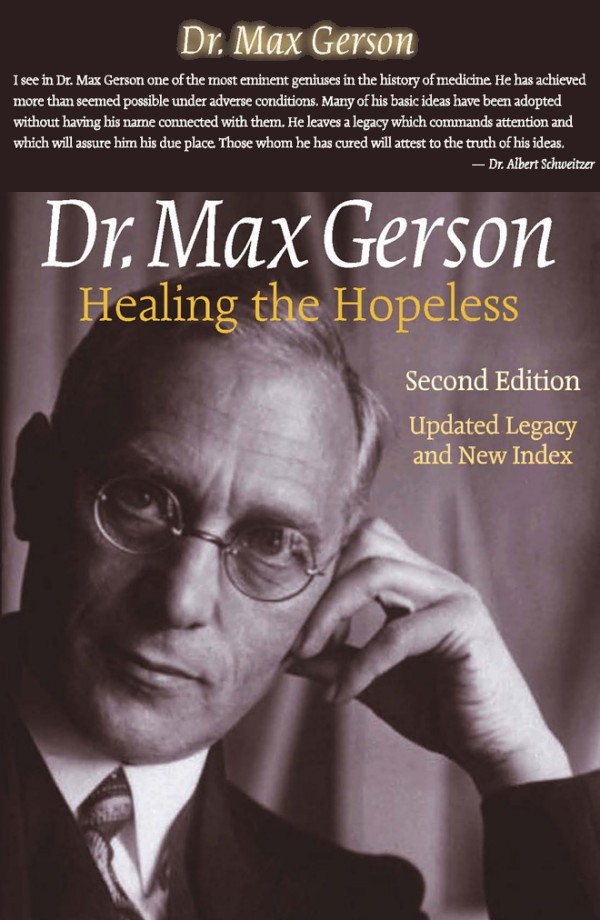 |
Now isn't that Curious?
The story about the Hidden
Wikipedia
information suggested that all mention of Albert Schweitzer
had been deliberately removed from Dr. Gerson's Wikipedia
page. Here again is what Howard Strauss said about
Wikipedia's omission:
Provable, referenced facts,
with dates and places, all suddenly became "claims,"
even the quote from no less than Nobel Laureate Albert
Schweitzer, M.D.
Dr. Schweitzer and his wife were patients of Dr. Gerson,
making this a first-hand account from a rather
reliable source.
Nevertheless Dr.
Schweitzer’s comment had been
permanently removed from Wikipedia.
Sure enough, if you read Wikipedia's
current
listing about
Max Gerson,
there is no mention of Albert Schweitzer. It's gone.
Here is the eulogy Albert Schweitzer
gave at Gerson's funeral.
“I see
in Max Gerson one of the most eminent geniuses in the
history of medicine.
Many
of his basic ideas have been adopted without having his name
connected with them. Yet, he has achieved more than seemed
possible under adverse conditions. He leaves a legacy which
commands attention and which will assure him his due place.
Those whom he has cured will now attest to the truth of his
ideas.
Unfortunately, he could not engage in scientific research or
teach; and he was greatly impeded by adverse political
conditions.
In
ordinary times he would have been able to expound his ideas
for many years as a professor at one of the important German
universities; would have taught pupils who could carry on
his research and teachings; would have found recognition and
encouragement. ... All this was denied him.
His
was the hard lot of searching and working as an uprooted
immigrant, to be challenged and stand as a fighter. We who
knew and understood him admired him for working his way out
of discouragement again and again, and for undertaking to
conquer the obstacles.”
|
Michael Lerner stated that Max
Gerson’s fall from grace in the mainstream medical community
did not occur until after he testified at the 1946 congressional
hearing. He himself said nothing controversial, but
another person enthusiastically touted his cancer recoveries as
“miracles”.
His life was never the same after
that. Max Gerson had unknowingly challenged
the Gods. It was this direct affront to the authority
of organized medicine that brought on the legal and
professional harassment that destroyed Gerson’s career. (
Source )
He was attacked in the pages of the
Journal of the American Medical Association for treating
cancer patients with diet therapy.
He was expelled from the New York Medical Society and
deprived of his hospital affiliations.
His therapy was blacklisted and featured on the American
Cancer Society's (ACS) Unproven Methods list. (
Source )
So let me ask you, the reader, a
question. Have you ever heard of Max Gerson before?
I would assume not.
And yet none other than the
leading humanitarian of the Twentieth Century knew Max
Gerson personally and watched carefully as Gerson healed his wife, his daughter,
and Schweitzer himself. One would assume Albert
Schweitzer, a physician himself, would know a fraud from a true
healer. And this doctor, perhaps the most trusted man
of his time, was convinced that Gerson had wonderful healing
abilities. He called Gerson "a genius in the
history of medicine."
One would assume
this
powerful personal endorsement
offered willingly by the world's most widely admired man
would find its way into Max Gerson's Wikipedia profile.
It was there once upon a time. But someone doesn't
want it in there, do they? Someone had to deliberately
remove it.
It turns
out that Albert
Schweitzer wasn’t Gerson’s only famous patient.
Apparently Gerson was the personal physician of
some guy named Albert
Einstein. The last time I checked, Albert
Einstein had been named by Time
Magazine as the most important man of the entire Twentieth
Century. One would assume Einstein was
bright enough to recognize what a dangerous man Gerson was,
but maybe not.
Another close friend of Gerson's was
Albert Schatz. Schatz was the man who first isolated
Streptomycin in 1943, a valuable drug that became the first
antibiotic remedy for tuberculosis. The work of Schatz
led to the 1952 Nobel Prize for Medicine, an honor that was
actually stolen from him. We will get to that story
later.
-
Albert Schweitzer - Nobel Laureate
and the Most Trusted man of the century
-
Albert Einstein - Nobel Laureate
and the Most Important Man of the Century
-
Albert Schatz -
discoverer of Streptomycin
I think we can
conclude that Dr. Gerson kept some pretty good company,
especially with guys named 'Albert'.
But you won't see any of those names
linked with Gerson in his Wikipedia profile.
What you do see in Gerson's Wikipedia
profile is the notable reference to Gerson's
“potentially
hazardous treatment”.
Let's put those statements side by
side.
|
potentially hazardous treatment - Wikipedia |
one of the most
eminent geniuses in the history of medicine
- Schweitzer
|
This, my
friends, is a “contradiction”.
Doesn't it strike you as odd
that a cancer renegade
was given lofty praise by a Nobel Prize winner
only to be diminished by
Wikipedia
as little more than a quack?
Out of curiosity,
just who are
you more likely to believe, Wikipedia or Albert Schweitzer?
Now the question must be asked - Why
would someone go to so much trouble to censor the positive
aspects of Gerson's career even today? The doctor has
been dead for over fifty years. Who is it that doesn't
want the casual reader to discover in Wikipedia that the
so-called potentially hazardous treatment of this fringe
doctor was once endorsed by the most admired man in the
world?
Someone asked me why I was making such
a big deal about "Wikipedia" of all things. Well, let
me turn that around. Why would Gerson's name be
considered such a threat 50 years later that someone would
go to these lengths to destroy his reputation? Someone
is bound and determined to keep this man's name buried.
So I ask this question, "What are they
hiding? What is that they don't want us to know about
Max Gerson?"
A Word of Caution Regarding
the Gerson Therapy
Obviously I admire Max Gerson. I base my
opinion on what I have read about him. I think
Dr. Gerson was a genuine healer, a man who took his
work seriously and cared about his patients.
That said, no matter how sympathetic I am to the
man, I still have no
idea how
effective Dr. Gerson's cancer therapy is.
Gerson was said to be more successful than most. I saw a
statistic that suggested Gerson was able to save about 30%
of his cancer patients. At the time, I suppose that was considered
a good percentage.
Only under pressure from Senator
Pepper did Gerson state that about 30% of those he
treated showed a favorable response
( U.S. Congress,
1946, 115)
History of
the Gerson Therapy
If you are
curious to learn more about the Gerson Therapy, I found an
excellent explanation
in
Chapter 14. It was part of a book called
Choices In Healing: Integrating
The Best of Conventional and Complementary Approaches to
Cancer
written by Michael Learner
Although
it aggravates me to say this, Orthodox Medicine may
very well be right. The Gerson Therapy might
be a waste of time. Maybe it really is
"potentially dangerous".
I
certainly have no way of knowing one way or the
other.
I found
good things that were said about the Gerson Therapy
and I found bad things as well.
To illustrate
the problem, here are some totally conflicting reports. This
is
a negative report on a website
dedicated to Linda Goodman, the astrologer who passed away
in 1995. The dialogue began with a discussion of the
Gerson Therapy endorsement made by Prince Charles. The
discussion then led to this troubling 2010 post by an
unknown person
I first heard of Gerson Therapy
when a local TV newswoman, Pat Davis, announced that she
had breast cancer and was not going to submit to
chemotherapy, opting instead for Gerson Therapy. In my
entry on alternative health practices, I wrote:
Pat Davis followed a rigorous
13-hour-a-day regimen of diet (green vegetables and
green juices), exercise, and coffee enemas (four a
day) developed by Dr. Max Gerson.
On the other hand, Pat Davis’
mother had had breast cancer twice, undergoing
chemotherapy and a mastectomy.
Davis knew the dangers of chemotherapy and the
effects of breast surgery. She refused to accept
that there were no alternatives. Gerson therapy gave
her hope.
When it was clear that the
Gerson treatment was ineffective, Davis agreed to
undergo chemotherapy. She died four months later on
March 20, 1999, at the age of 39, after two and one
half years of fighting her cancer. Could
chemotherapy have saved her had she sought the
treatment earlier? Maybe. The odds may have
been against her, but the slim hope offered by
scientific medicine was at least a real hope.
The hope offered by Gerson
is a false hope through and through.
Pat Davis is dead but her
mother is still alive. I tell this anecdote not to
prove that Gerson therapy doesn't work but to remind
those who, like Prince Charles, know of someone or
know someone who knows of someone who survived a
death sentence by using vitamin C or Laetrile or
bile of ogre piss, that there are untold anecdotes
that nobody tells because the patients are dead.
Dead men, dead women, and dead
children don't tell charming anecdotes.
Then I found this positive report from
Howard Straus, Gerson's
grandson, when he was interviewed in a
health forum.
POL
MAGAZINE: Could you Name
for Us some famous Persons, if there ever has been any,
who have recovered under the methods prescribed by Dr.
Max Gerson?
Howard Straus: Prof. Albert
Schweitzer, MD, Nobel Laureate (type II diabetes),
Mrs. Helene Schweitzer, lung tuberculosis,
Rhena Schweitzer [Miller], rare, unnamed ulcerating
skin disease , Chancellor
Engelbert Dollfuss (Austria), later assassinated by
Nazi sympathizers, Anthony Quinn, actor, Joseph
Szigeti, virtuoso violinist. Philippe Jean
Bunau-Varilla, Suez Canal engineer, Emissary
Plenipotentiary to the United States who negotiated the
Panama Canal treaty, tuberculosis.
Raymond Gram Swing,
Radio Commentator (one of America’s top radio
commentators), Prof. Irving Fisher, Economist,
Yale University, Tuberculosis (at the time, America’s
leading economist), Prof. Yoshihiko Hoshino, MD,
Fukushima Medical University. Colon cancer spread to
liver, alive and well 18 years later. William
Schickel, outstanding American church architect and
stained glass artist, lympho-sarcoma, alive and well 60
years later , Jay Kordich (“The Juiceman”),
bladder cancer, alive and well 62 years later.
And my mother, Charlotte Gerson, bone
tuberculosis, 1934. Alive and well 76 years later.
You might note that Raymond
Swing's name is in there. Swing passed away in
1968. Assuming Gerson treated him for cancer
in 1946, Swing lived 22 more years.
Considering the survival rate for most cancers past
5 years is remote, one can understand Swing's
loyalty to Dr. Gerson.
Like I said at the start of
this article, because some people lived and some
people died, no one can ultimately "prove" anything
about the Gerson therapy. There is simply too
much we don't know.
|
So what is my point?
There is no question that I am openly
sympathetic to any cure that tries to rally the body's own
resources to fight disease... especially if it works!
Gerson's Therapy seemed to offer some real hope, but after
the run-in with the medical brass in 1946, he was
basically handcuffed by the medical establishment during the
last 13 years of his career.
Whether Gerson's cure works or doesn't
work is debatable, but what bothers me is that I
believe Dr. Gerson's therapy held PROMISE.
In fact, the way he was treated here in this country was downright shameful. I read
that this gentle man was totally
bewildered by the obstacles thrown in his path. He
simply could not comprehend the reasoning behind the
politics that would cause people to deliberately suppress
his cure. Didn't American doctors want to find a cure
for cancer?
Dr. Max Gerson was hardly a quack.
Quite the contrary. Dr. Gerson appears to have been a
well-meaning and highly trained medical expert. Gerson
clearly wanted nothing more than to help find a cure not
just for cancer, but for all kinds of disease. Whether
one believes his therapy has value or not, no one can deny
Gerson had a very successful career healing people of all
kinds of diseases. I base this statement on a thorough
medical report by Dr. Patricia Spain Ward (History
of the Gerson Therapy)
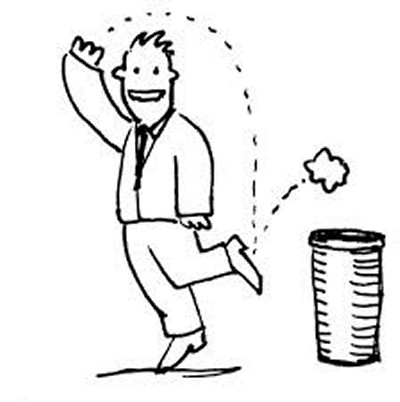 |
Today the name of Max Gerson is
completely unknown to the American public. It can't be
easy hiding the identity of "one of the most eminent geniuses in medical
history," but that is basically what has happened. Someone has
done a good job burying his story as far out of sight as
possible. And that's a shame because Max Gerson had a
far greater impact on medicine than any superficial search on his name
will ever show.
One has to assume that Max Gerson posed a
serious threat to the Medical Establishment or they wouldn't
have gone to such lengths to discredit him. Unfortunately, it is unlikely that the
medical world will ever allow anyone to openly experiment using his
methods. More likely they will fight it tooth and
nail.
Having spent 80 years using threats and
advertising revenue to effectively silence the U.S. media,
the name of Max Gerson will forever be kept in the shadows.
The story of the Wikipedia manipulation of Gerson's legacy (The
Hidden Wikipedia) is a clear-cut example that the people
who fear Gerson's methods remain constantly on the alert for
anything that might escape the media blackout.
I contend certain ruthless people have
deprived the world of a very promising line of research. And that, my friends, is a huge loss
for all of us.
In fact, I will go further than that...
I think it is a crime. Someone threw a promising cure for cancer
in the wastebasket.
|
Another Look at the Conspiracy
I don't know if a formal,
well-organized core of evil conspirators exists in medicine.
That's probably going a little too far.
Yes,
there are bound to be various Old Boy Networks where
efforts are secretly coordinated. However,
I strongly
doubt that a dozen powerful shadowy men meet regularly behind closed doors to
call the shots and plot the next move.
If there
is a conspiracy, it is not an organized one.
It is more likely a group of 100, 500 or 1,000
like-minded executives making independent decisions
that benefit their companies, but not necessarily
the cancer victims.
I suspect these are wealthy men at the top
who are quite content with things the way
they are and want to keep it that way.
|
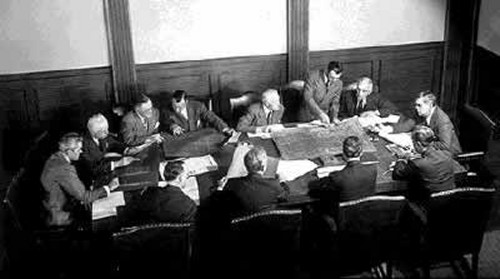 |
Although these people
appear to work in tandem with one another, that's
not necessarily the case. More likely, they
are working independently, but coming to similar
conclusions on how to keep the monopoly running
smoothly.
I think
most of the dirty work was done a long time ago. Once you
are on top, it's not that hard to stay there. Today a powerful monopoly exists that
exerts an iron grip on the field of medicine.
All these executives really have to do these days is
continue to control the media and use the FDA to shut down any
emerging threats. This will allow the drug
industry to control its market and make obscene
profits while the researchers plod their way to a
synthetic "patentable" drug. Once
the Holy Grail is finally attained, then all of
today's painful chemo stuff will disappear into the history
books and the medical breakthrough will guarantee a
new round of obscene profits.
These
people don't feel a shred of guilt about keeping the
system just the way it is. These
conscience-impaired executives have been looking the
other way so long it has become second nature to
them. Locked away in their board rooms and
steel glass towers, they don't have to get anywhere
near the horrible suffering. Instead they turn
a blind eye to the pain and go about their business.
Another Look at Laetrile
If I
have learned nothing else on my journey, at least I
have discovered Wikipedia isn't quite as reliable
as I originally thought. It crossed my mind
that in my journey, I had ignored Laetrile based on
Wikipedia's breezy dismissal. Now I was
suspicious to see if I missed something.
Consequently I decided to take another look at Laetrile.
People
have referred to cancer as the disease caused by
civilization. Epidemiologists have noticed
that many primitive people are cancer free, but
somehow begin to get cancer when the white man
appears... a small joke. So
cancer researchers identify places with low rates of
cancer, then ask themselves what might explain
the absence of cancer in the first place.
Research
has shown that a tribe in the mountains of Pakistan
known as the 'Hunza' never contract cancer of any
kind as long as they stick to their native diet. Apparently their diet is exceptionally high in both
apricots and millet. However, once exposed to
western diets, they become vulnerable.
Working
off this clue, in 1952, a biochemist named Ernest Krebs postulated that cancer is caused by a
deficiency of nitrilosides, another name for Vitamin
B 17. This substance occurs naturally in
over twelve hundred foods and plants, including
bitter almonds, millet,
wheat grass, and lima
beans.
The diet of primitive man and most fruit-eating
animals was very rich in nitrilosides. They
regularly ate the seeds and kernels of all fruits,
since these seeds are rich in protein,
polyunsaturated fats, and other nutrients. Furthermore, animals seem to instinctively seek out
grasses and other plants which contain nitrilosides.
Krebs
asked himself could there be anti-cancer agents in these
substances?
Amygdalin, one of the most common nitrilosides,
occurs in the pits and kernels of the seeds of many
fruits and particularly in apricots. Krebs
developed a compound using Amygdalin from the
apricot pit and called it "Laetrile".
Krebs
began marketing Laetrile as vitamin B-17 as a way to
get around the FDA's "safety and efficacy"
requirements for new drugs. Krebs made an
interesting point. He said if we can control
scurvy by curing a vitamin C deficiency, perhaps it
is possible to do the same for cancer today with
B-17. This rather clever suggestion allowed
Laetrile to gain a wide usage - especially in
California - before the inevitable FDA crackdown
began. Krebs, a colorful character, had all
sorts of problems from that point on. Just
take my word for it.
Meanwhile, the Laetrile movement gained a powerful
adherent in Dr. Dean Burk. Burk was a biochemist with
a Ph.D. from Cornell Medical College who had joined
the National Cancer Institute (NCI) in 1939 as a
research fellow. After ten years he was
appointed as Head of NCI's Cytochemistry Section,
which had a staff of four persons at the time of his
retirement 25 years later.
Burk did an experiment in which Laetrile was used to
kill a tissue culture of cancer cells. Burk
reported that he could "see the cancer cells dying
off like flies." Burk's endorsement
created a lot of curiosity. Several labs
decided to research this interesting new lead.
One of
those laboratories was located in New York city.
Its name was Memorial Sloan Kettering.
Whistleblowers
Something I have never come to
grips with is how corporations blithely turn a blind
eye to the damage they do. We all know
corruption exists, but it is typically so well
disguised through media distortions that we never
get angry enough to do something about it.
There are companies that
knowingly do things that cause cancer. We know
that our food supply contains far too much sugar and
dioxins. We know the asbestos manufacturers deceived
the America public for decades. We know from
movies like A Civil Action and Erin
Brockovich that companies knowingly pollute the
soil and then spend millions of dollars trying to
avoid paying penalties.
Perhaps my all-time favorite story of how dangers to
the public stay hidden involves Jeffrey Wigand, one
of my personal heroes.
Wigand
was the tobacco company insider who blew the whistle
on Big Tobacco in the mid-1990s, exposing the lies
we had all been told for
decades about cigarettes.
He possessed Insider Information that the
cigarette industry had possession of research that
proved nicotine was addictive, but then pretended to
the world it wasn’t.
Formerly a research scientist for Brown &
Williamson, Wigand revealed
that cigarette companies were consciously trying to
get us hooked on nicotine, despite tobacco
executives' public statements to the contrary.
What's more, Wigand told Mike Wallace
on 60 Minutes that
his former colleagues knew all along that their
tobacco products contained additives that increased
the danger of developing diseases.
Take a guess which 'disease' in particular Wigand
was referring to.
Wigand
decided the public deserved to know. At great
personal risk and despite tremendous harassment from
Big Tobacco, Wigand went on 60 Minutes and
told his story. The tobacco has
never been the same since. Dr. Wigand
was the man who singlehandedly brought Big Tobacco
to its knees.
So what is my point?
I personally do not understand
how rich and powerful people think. How can
any executive know his company is polluting the soil
or putting out a product like cigarettes with the
complete knowledge that it is making people sick and
live with themselves?
And yet thanks to Jeffrey
Wigand, we have indisputable evidence that powerful
people have no conscience whatsoever about hurting
us for their own gain and lying about it.
Here is an
interesting quote attributed to Dr. Dean Burk, the
NCI biochemist who never wavered in his support of
Laetrile:
"It's time you learned the facts of life. You
see, there are really only two kinds of people
in the world, the eaters and the eaten. You just
have to make up your mind which group you're
going to be in. When you have the power,
you don't have to tell the truth. That's a rule
that's been working in this world for
generations. And there are a great many
people who don't tell the truth when they are in
power in administrative positions."
Memorial Sloan
Kettering
"These
conscience-impaired executives have been looking the
other way so long it has become second nature to
them."
Thanks
Ralph Moss, another whistle blower, I ran across
a
remarkable story about board room shenanigans in the
cancer industry that suggest further corruption.
Moss pulled back the curtain and gave us all an
Insider's Look at how powerful people treat a
serious threat to their Cancer Empire.
This
article was
written by James Jaeger of the Jaeger Research
Institute. Dr. Jaeger relied on
Ralph Moss for much of the
remarkable insider accounts.
Please
keep in mind this is a very long and complex story
in its original form. I have therefore
condensed the story. Nevertheless, I
thoroughly recommend to anyone who is interested
that they read
the complete account.
Laetrile: The Suppressed Cure for Cancer,
By James Jaeger
The
longest and most famous Laetrile tests ever
performed were run for nearly five years at
America's most prestigious cancer research
center, Memorial Sloan-Kettering (MSK)
Laetrile was meticulously tested under the
direction of Dr. Kanematsu Sugiura. As the
senior laboratory researcher there, with over 60
years of experience, Dr. Sugiura had earned the
highest respect for his knowledge and integrity.
Few, if any, names in cancer research are as
widely known a Kanematsu Sugiura’s.
Possibly the high regard in which his work is
held is best characterized by a comment made to
me (Jaeger) by a visiting investigator in cancer
research from Russia. The Russian said,
"When Dr. Sugiura publishes, we know we don’t
have to repeat the study, for we would obtain
the same results he has reported."
In a
science laboratory, where truth is sought to the
exclusion of all else, Sugiura would have been
the perfect man for this test. For the purposes
of Sloan-Kettering, however, he was the worst
possible choice.
The
official report prepared by Sugiura stated:
|
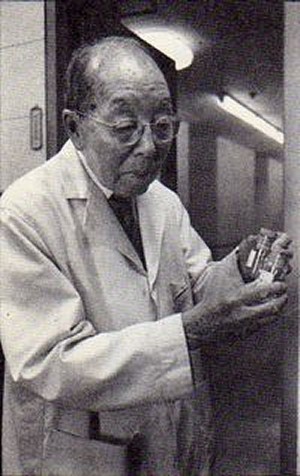 |
-
The results clearly show that Amygdalin
significantly inhibits the appearance of
lung metastases in mice bearing spontaneous
mammary tumors and increases significantly
the inhibition of the growth of the primary
tumors
-
Laetrile also seemed to prevent
slightly the appearance of new tumors
-
The
improvement of health and appearance of the
treated animals in comparison to controls is
always a common observation
-
Dr. Sugiura
has never observed complete regression of
these tumors on all his cosmic experience
with other chemotherapeutic agents.
The
board of directors at Sloan-Kettering is
virtually controlled by corporate executives
representing the financial interests of
pharmaceutical companies. Most of that control
is held by the Rockefeller dynasty and their
cartel partners. At the time of the Sugiura
tests, there were three Rockefellers sitting on
the board plus more than a dozen men whose
companies were within the Rockefeller financial
orbit.
The history of how the Rockefellers became
involved in the pharmaceutical industry began
when John D. Rockefeller, Sr., and his son,
J.D., II, began donating to Memorial Hospital in
1927. They also gave a full block of land on
which the new hospital was built in the 1930’s.
Nothing was given without something to be
received. In this case, it was control over one
of the great medical centers of the world. How
that happened was described by Ralph Moss,
former Assistant Director of Public Affairs at
Sloan-Kettering. Speaking of the expansion of
Sloan-Kettering after World War II, Moss wrote:
The composition of the board of trustees at
that time reveals a kind of balance of
power, with the Rockefellers and their
allies in overall control, but with those
representing the Morgan interests assuming
many positions of power. From this period
forward the world’s largest private cancer
center was ruled by what looks like a
consortium of Wall Street’s top banks and
corporations.
By the mid 1960’s, the MSKCC board had begun
to take on a rather uniform appearance. What
stood out was that many of its leading
members were individuals whose corporations
stood to loose or gain a great deal of
money, depending on the outcome of the
"cancer war."
With
this background in mind, it should come as no
surprise to learn that Sugiura’s findings did
not please his employer. What goes on inside the
laboratories is generally of little interest to
board members. It is assumed that, whatever it
is, it will result in a new patented drug that
will keep the cash flow moving in their
direction.
They were slow to pick up on the
implications of Sugiura’s work but, when they
did figure it out, all hell broke lose in the board room.
If a cure for cancer were to be found in an
extract from the lowly apricot seed, it would be
a terrible economic blow to the cancer-drug
industry.
As
it turned out, several other researchers had already
duplicated Sugiura’s experiments and had
obtained essentially the same positive results. One was Dr. Elizabeth Stockert and another was
Dr. Lloyd Schloen. Both were biochemists at
Sloan-Kettering when they did the work. Schloen
had gone so far as to add proteolytic enzymes to
the injections - as is commonly done by Laetrile
doctors - and reported a 100% cure rate among his
Swiss albino mice!
Rick
Archer's Note:
The
executives were not happy with Sugiura. They
would have preferred let the furor die down and move
on to something else. However, as the media
debated the
contradiction between the leaked findings and the
official stance, MSK was forced to begin another round of
testing. It was time to put Pandora back in
her box.
That was not the result the
executives
wanted. In fact, it was downright embarrassing.
These broadsides became a source of
embarrassment to the administrators who were
anxious to close the book on the subject and let
it fade from public attention. One of the most
outspoken proponents of this view was Benno
Schmidt, Sloan-Kettering’s Vice Chairman.
Schmidt was an investment banker with powerful
connections in all the right places. He was a
close friend of Laurance Rockefeller, a member
of SK’s board of managers, and Chairman of
President Carter’s National panel of Consultants
on the Conquest of cancer. That is the group
that dreamed up the so-called "war on cancer"
which turned out to be primarily a means for
channeling billions of tax dollars into research
centers such as Sloan-Kettering.
To Schmidt, the only purpose of testing Laetrile
was to convince the public that it doesn’t work.
Whether it might work or not was unimportant.
This
reality was brought to light quite accidentally,
no doubt, in an interview with Dr. Martin that
appeared in the December 23, 1977, issue of
Science. When the reporter asked Dr.
Martin if the Sloan-Kettering tests were aimed
primarily at scientists, he replied: "Nonsense.
Of course this was done to help people like [Benno]
Schmidt and congressmen answer the laetrilists."
Not to advance science, not to test a
possible cancer cure, not to find truth, but to
"answer the laetrilists"!
In a statement carried in the August 11, 1975,
issue of Medical World News, Schmidt said:
"Clinical trials? No way! There’s no way, I
believe, that they can convince the people at
Sloan-Kettering there’s any basis for going
further."
Dr.
Daniel S. Martin at the Catholic Medical Center
in Queens, New York, had previously failed to
obtain positive results with Laetrile, but had
not used the same protocol as Sugiura. To
overcome this problem, Sugiura was asked to
participate in a second series of tests by
Martin, which he did. This time, however,
the results were in favor of Laetrile.
Now,
however, Martin made a complicated clinical maneuver
that virtually guaranteed the negative result he was
looking for.
By
visual examination, there were twice as many new
tumors in mice that did not receive Laetrile
than in those that did. The next step in the
Sugiura protocol would have been to use a
microscope to examine the lung tissue (which is
where the cancer had been located) to measure
the extent of tumor growth at the end of the
experiment. Martin, however, refused to accept
either visual or microscope examination and
insisted instead that a process be used called
bioassay. In bioassay, the mouse’s lung tissue
was shredded and then injected into two other
mice. If cancer developed in either of them, it
was assumed that the injected tissue was
cancerous.
This cleared away all the variances between
great improvement, small improvement, or no
improvement at all. No matter how much the
cancer might have been weakened, no matter that
it might be in the process of being destroyed
altogether by Laetrile, so long as there were
any cancer cells left for transfer to the living
mice, it was called a failure.
Since the original mice were sacrificed before
the Laetrile had a long-term chance to do its
work, it was assured that virtually all of them
no matter how improved they may be, would still
have at least some cancer cells.
Therefore, they all would be classified as
failures for Laetrile.
By
this method, Dr. Martin was able to announce
with a straight face that there was no
difference between the treated and the control
animals. Once again, science had been used to
conceal the truth.
By
this time, a group of employees at
Sloan-Kettering became angered over the way
their top management was attempting to cover up
Sugiura’s findings. They began to circulate a
series of open letters to the public under the
name Second Opinion.
The
identities of the authors were not known, but it
was obvious from the data they released that
they were well connected within the
organization. Photocopies of important internal
memos -even copies of Sugiura’s laboratory notes
-
were sent to Laetrile advocates and to selected
members of the press.
The
furor caused by publication of Second Opinion
forced the strategists to keep the book open a
little longer and to assume the stance of
fairness and open-mindedness. And what could be
more fair than another test?
This new
round of testing came back in favor of Sugiura.
However, in a
situation darkly reminiscent of the 1972 Olympics
where the Russians got three chances to win the
basketball game, MSK kept organizing more tests
until they got the answer they wanted.
With this newest result,
Sugiura was vindicated at last. The casual
observer might have concluded that the issue was
finally settled. But the casual observer might
have been wrong. There was too much at stake
here to simply jump over the net and
congratulate the victorious opponent. It was a
case of "Damn it all. Let’s play another round,
and another, and another until the proper side
wins."
The
Jaeger Report suggest Suguira won the next round as
well.
The tally at the end of the test showed that the
Laetrile-treated mice had less than half the
number of tumors as the controls. Once again,
Sugiura had been proven correct.
Another
round was scheduled. This third
test had some serious lab irregularities that resulted in a
very strange test result. It is very
complicated, so I will simply the results favored that anti-Laetrile
side.
"Results from the experiment
do not confirm the earlier positive findings of
Sugiura."
Sugiura
vigorously opposed the result. He said the
test was rigged.
Dr.
Sugiura was incensed at the audacity of
releasing blatantly impossible statistics. He
said:
"There’s something funny here. The small
tumors stopped growing 40% of the time in
the saline control group and only 27% of the
time in the treated group. We people in
chemotherapy use saline solution because it
does not affect tumor growth. Now this
happens. They must not forget to mention
that there was more stoppage in the controls
than in the treated! I won’t
give in to this!"
But no one listened to him.
Now that MSK finally had the result it wanted, it
scheduled a news conference.
On June 15, 1977, a news
conference was called at Sloan-Kettering to
announce the conclusion of the Laetrile trials.
All of the key players were in the room: Dr.
Robert Good, Director and President of the
Center; Dr. C. Chester Stock, vice president;
Dr. Daniel Martin, from the Catholic Medical
Center; and seven others including Dr. Kanematsu Sugiura who had been invited to attend but not
to participate.
Dr. Good began the conference by reading aloud
the press release which said that, after
exhaustive and carefully controlled testing:
"Laetrile was found to possess neither
preventive, nor tumor-regressant, nor anti
metastatic, nor curative anti-cancer activity".
After Dr. Good was finished, the floor was
opened to questions from the media.
"Dr. Sugiura," someone shouted out suddenly. "Do
you stick by your belief that Laetrile stops the
spread of cancer?"
The television cameras quickly turned to Sugiura
for his reply. A hush fell across the room.
Sugiura looked at the reporter and replied in a loud,
clear voice: "I stick!"
Sugiura's defiance went for naught.
Laetrile's "failure" according to MSK was
the feed that was
carried on nationwide television that evening.
One
month later, July 1977, Dr. Lewis Thomas,
President of Sloan-Kettering, appeared before
the Subcommittee on Health and Scientific
Research, which was under the chairmanship of
Senator Edward Kennedy. This is what Lewis Thomas
said:
There is not a particle of scientific
evidence to suggest that Laetrile possesses
any anti-cancer properties at all. I am not
aware of any scientific papers, published in
any of the world’s accredited journals of
medical science, presenting data in support
of the substance, although there are several
papers, one of these recently made public by
Sloan Kettering Institute, reporting the
complete absence of anti-cancer properties
in a variety of experimental animals.
In the following
months, the directors and officers at
Sloan-Kettering continued to denigrate Sugiura’s
findings, claiming that no one else had ever
been able to duplicate them. In other words,
they lied. Not only did they lie, they did so on
a subject that directly effects the lives of
hundreds of thousands of cancer victims each
year. It is not an exaggeration to say that
a million people have needlessly done to
their death as a result of that lie.
Ralph Moss was the Assistant Director of Public
Affairs at the Sloan-Kettering during most of
these events. In fact, he was the one who was
required to write the press release claiming
that Laetrile was ineffective. But Moss was
secretly one of the
leaders in the Second Opinion underground and
had previously helped
to get the truth out to the rest of the world.
Finally, in November of
1977, Moss decided to
"surface" and go public. He called a press
conference of his own and, before a battery of
reporters and cameramen, charged that
Sloan-Kettering officials had engineered a
massive cover-up. Moss
provided supporting documents and named names.
Not surprisingly, Moss was fired the next day.
What was the official justification?
As
Moss explained it:
"I had failed to
carry out my most basic responsibilities
- in other
words, to collaborate in falsifying
evidence."
[Side
Note: Ralph
Moss reported that about 20
Laetrile experiments completed at Memorial
Sloan-Kettering Cancer Center produced positive
results (
Source )]
Excerpts from a 1994
Interview with Ralph Moss Concerning
MSK and Laetrile
Twenty years ago I was hired at Memorial Sloane
Kettering (MSK) cancer centre in New York as the
science writer, later promoted to assistant
director of public affairs. Shortly after I went
to work there, I went to visit an elderly
Japanese scientist, Kanematsu Sugiura, who
astonished me when he told me he was working on
Laetrile (B17).
At
the time Laetrile was the most controversial
thing in cancer, reputed to be a cure for
cancer. We in public affairs were giving out
statements that Laetrile was worthless, it was
quackery, and people should not abandon proven
therapies.
I
assumed our own press releases were correct, so
I was astonished that our most distinguished
scientist would even be bothering with something
as worthless as Laetrile. I said, "Dr.
Sugiura, why are you
doing this if it does not work?"
He
took down lab books and showed me that in fact
Laetrile is dramatically effective in stopping
the spread of cancer. The animals were
genetically programmed to get breast cancer and
about 80 - 90% of them normally get spread of
the cancer from the breast to the lungs which is
a common route in humans, also for how people
die of breast cancer. Instead, when they
gave the animals Laetrile by injection, only
10-20% of them got lung metastases.
And
these facts were verified by many people,
including the pathology department.
|
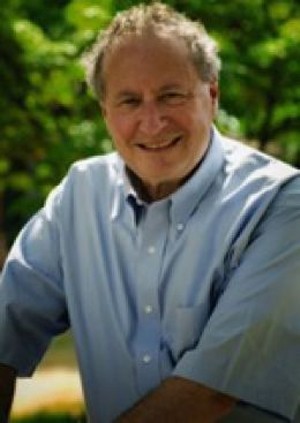 |
So this
is verified, that Laetrile can have this
positive effect?
We were
finding this and yet we in public affairs were
told to issue statements to the exact opposite
of what we were finding scientifically, and as
the years went by I got more
wrapped up in this
thing. Three years later I
finally couldn't take it
anymore and said all this in my
own press conference, and was fired the next
day, "for failing to carry out his most basic
job responsibility" -- i.e. to lie to the public
what goes on in cancer research.
How can
these people justify this in their own minds?
Basically the attitude was best expressed by
Lewis Thomas, the president of the centre, who
told my boss, as he would not see me,
"I am
not going to die on the barricades for
Laetrile. It is not a cure, it is only a
palliative, (meaning it relieves pain and
stops the spread of cancer), if it were a
cure it might be a different story, but I am
not going to give up my career, to die on
the barricades".
That's how
they justified it in their own minds. I could
not do that, nor could Dr Sugiura, who never
renounced the results of his own studies,
despite the fact they put enormous pressure on
him to do so.
[Read
the Complete Interview:
World Without Cancer]
The
Faceless Conspiracy
I am going to
leave you with a thought. We already know what
the face of evil looks like. It is the face of
Adolph Hitler who murdered 6 million Jews. It
is the face of Joseph Stalin who caused the death of
20 million Russians. It is the face of Saddam
Hussein who murdered his own people, started
senseless wars and torched the Kuwaiti oil fields
out of spite when he lost the Gulf War.
But
there is no face for the evil of the cancer
industry. We can't point to this
guy or that guy and say, "It's him, that's
the guy who did it." Furthermore,
since people die of cancer one at a time and
in different places, we don't have dramatic gruesome pictures of bodies stacked
on top of each other and pictures of mass
graves.
Unless we work in a hospital, most
of us probably don't even realize that
people are dying right and left.
However, if you piled the bodies of all the
people who die of cancer every day here in
America, the death pit would look just as
full. Of course these people were not
deliberately murdered, but if it is true
that potential cures for cancer were
deliberately sabotaged, there is a form of
responsibility here.
|
 |
I say look
at the numbers. In 1900, 1 in 20 people died
of cancer. That's the same time the
money people got involved in the medical industry.
Under their century of stewardship, the incidence of
cancer has risen to 1 in 2.
In 2013,
600,000 Americans are slated to die of cancer.
The World Health Organization says that number
expands to 8 million deaths worldwide.
Although it is true there are some promising
breakthroughs in mainstream cancer research on the
horizon, we have been waiting now for a ridiculous
number of years without answers. In the
meantime, somebody - we really don't know who - has
managed to sweep at least three promising cures
under the carpet.
I have presented anecdotal evidence that at
least 3 promising "alternative cures" offered
potential breakthroughs as far back as 1930 (Essiac),
1945 (Gerson), and 1970 (Laetrile).
One can
only wonder who made the decision to curtail these
possibilities and what their motives were.
Now immediately
the protest begins. "No one ever proved that stuff
worked!" I agree, that's true.
But at the same
time, at least in the case of Essiac, Hoxsey and Gerson,
there were people STANDING who should have been dead
and their death-defying presence was ignored. And if you believe
Ralph Moss, you have Dr Sugiura, the top researcher at
Sloan Kettering who went to his grave convinced
that Laetrile really did shrink tumors.
Furthermore, what would have
happened if science had put some real muscle into
researching any of these three cures?
Now immediately
the protest begins again. "We tested every one
of those cures and none of them worked!"
There's
only one problem with this argument. Ralph
Moss went on record to explain that Memorial Sloan
Kettering deliberately falsified its data with
Laetrile. Moss added that Dr. Sugiura, a top
researcher in MSK's own clinic, never backed down
from his conclusion that Laetrile held promise.
And why
would MSK go to war with its own respected
researcher?
Unfortunately, if an effective cancer treatment or
cure was found in the lowly apricot seed, it would
spell economic disaster for the cancer industry.
So what
did MSK do? They handed Ralph Moss phony press
releases that said the opposite of what their top
scientist had discovered. And when Moss spoke
up, they fired him for his impertinence.
If that isn't
evidence of a conspiracy, then what would you call
it?
MSK's
questionable behavior casts doubt on the
earlier research done at Sloan Kettering regarding Essiac and Gerson. Was there a similar
whitewash?
At this
point, it is very difficult to believe that MSK gave
Essiac and Gerson a fair shake. So what
we are left with are at least three promising
alternative cures that could have been nurtured and
explored, but
instead were sabotaged and suppressed.
I
consider this shameful. Rather than explore
two paths to a cure - natural and synthetic - we are
left with what I consider the less desirable path.
If given a choice, I think most people would prefer
to find the cure in nature. Women would choose
a bitter herbal tea or a strict diet or ground up apricot
seeds over a mastectomy any day of the week.
Let's fantasize a bit. Let's pretend we hit the jackpot with Essiac
all the way back in 1930. Half a
million cancer deaths in America per year
could possibly have been avoided. I
know this is far-fetched, but bear with me.
80 years times 500,000 deaths per year = 40
million lives.
As you can see in the picture, Max Gerson's daughter
Charlotte came up with a similar number.
Of course the cancer victims were not
deliberately let to die, but nevertheless
every year the bodies continue to pile up.
Now we are starting to talk Hitler, Stalin,
and Saddam body counts all rolled into one.
The utter magnitude of the damage caused by the
closed-minded attitude against alternative
cures over the past century is hard to
accept.
|
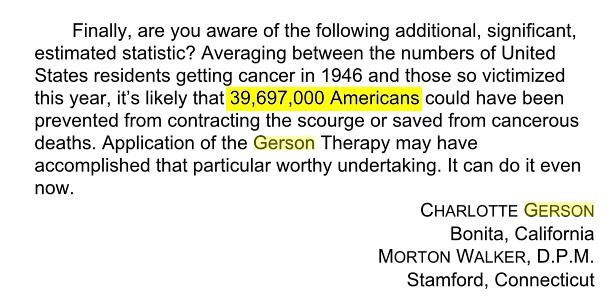 |
For the
good of mankind, I hope
the drug industry finds that synthetic, patentable cure for cancer
soon.
But in the meantime, it feels to me
there is a real
sickness inside the medical field that probably
isn't going away any time in the near future.
Considering the medical field is dedicated to
healing and care, you have to wonder
about the seeming lack of compassion on the part of the nameless faceless people who
have been looking the other way for over a century.
"Behind
every great fortune is a crime"
- Honore de Balzac
"All
that is necessary for the triumph of evil is
that good men do nothing"
- Edmund Burke
"During
the process of applying for this job, I had
to submit to interviews with all the leaders
of Memorial Sloan-Kettering Cancer Center (MSKCC).
I well remember meeting with Lewis Thomas,
MD, president of MSKCC, who stared at me
vacantly through a cloud of pipe smoke, as
remote as the hookah-smoking caterpillar in
Alice in Wonderland.
Perhaps he was thinking about his next essay
for the New England Journal of Medicine,
soon to be published as the award-winning
book, 'Lives of a Cell'. Whatever the
reason for his remoteness, my interview with
him (and every subsequent encounter) was
both mystifying and intimidating."
-
quotation from Ralph Moss, recalling
Lewis Thomas
"I
am not going to die on the barricades for
Laetrile. It is not a cure, it is only
a palliative (meaning it relieves pain and
stops the spread of cancer). If it
were a cure, this might be a different story,
but I am not going to give up my career to
die on the barricades."
Lewis Thomas, President of Memorial
Sloan-Kettering (quotation
from Ralph Moss)
NEW YORK (Dec 4, 1993) - Lewis Thomas, 1913-1993, the
charismatic physician whose ruminations on biology won
him acclaim as the "poet laureate of
20th-century medical science," died
yesterday of cancer, a disease he spent his
life studying and fighting. From 1973
to 1980, Dr. Thomas was president of
Memorial Sloan-Kettering, one of the world's
leading cancer institutions.
|
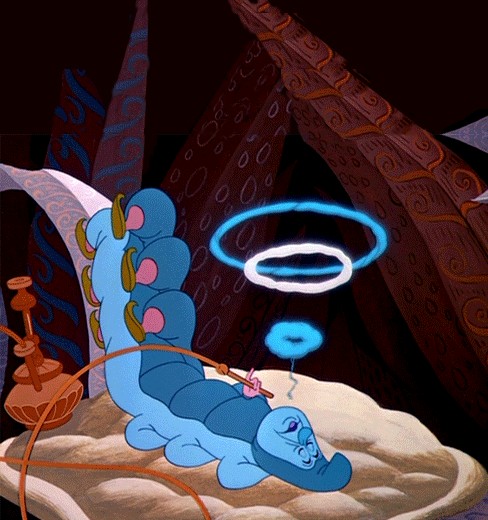 |
Rick Archer
July 2013
Send comments to:
dance@ssqq.com
I will honor any request to keep your comments private.
|
|
Rick Archer's Note:
I will
simply say this - If you thought this story was interesting, the
next one is a blockbuster.
Chapter Three -
Burzynski
|
Correspondence
"Rick,
I was very intrigued by your article(s) on
the cancer. I have believed this for a long
time also - it's a multi-billion dollar
business, so why present a cure?
I have a good friend who about 20 years ago
told me that her father was told he had just
a few months to live but would live longer
if he took the chemo etc. He told them no
and went to the health food store and got
some "tea" which I am assuming was probably
some sort of green tea. He drank it every
day (not sure how many times) and about a
year later, he went back to the doctor and
.... cancer-free!
The doctor kept
drilling him about what he had done and when
he told him, the doctor just kept asking him
what else he had done. He repeated the
"tea" story. The doctor repeatedly said
that it could not have had anything to do
with it. When the doctor left the room, the
technician told her dad that he did know
what tea he was talking about but that
because they were in a multi-million dollar
business, they were not allowed to tell
patients about it. A similar thing happened
to my same friend's uncle and he drank the
tea and they are both alive and well today.
I have heard stories where the cancer places
tell patients that if they take "this" or
"that" from other places, they will not
treat them with chemo. It is unbelievable
... but very true."
|
|